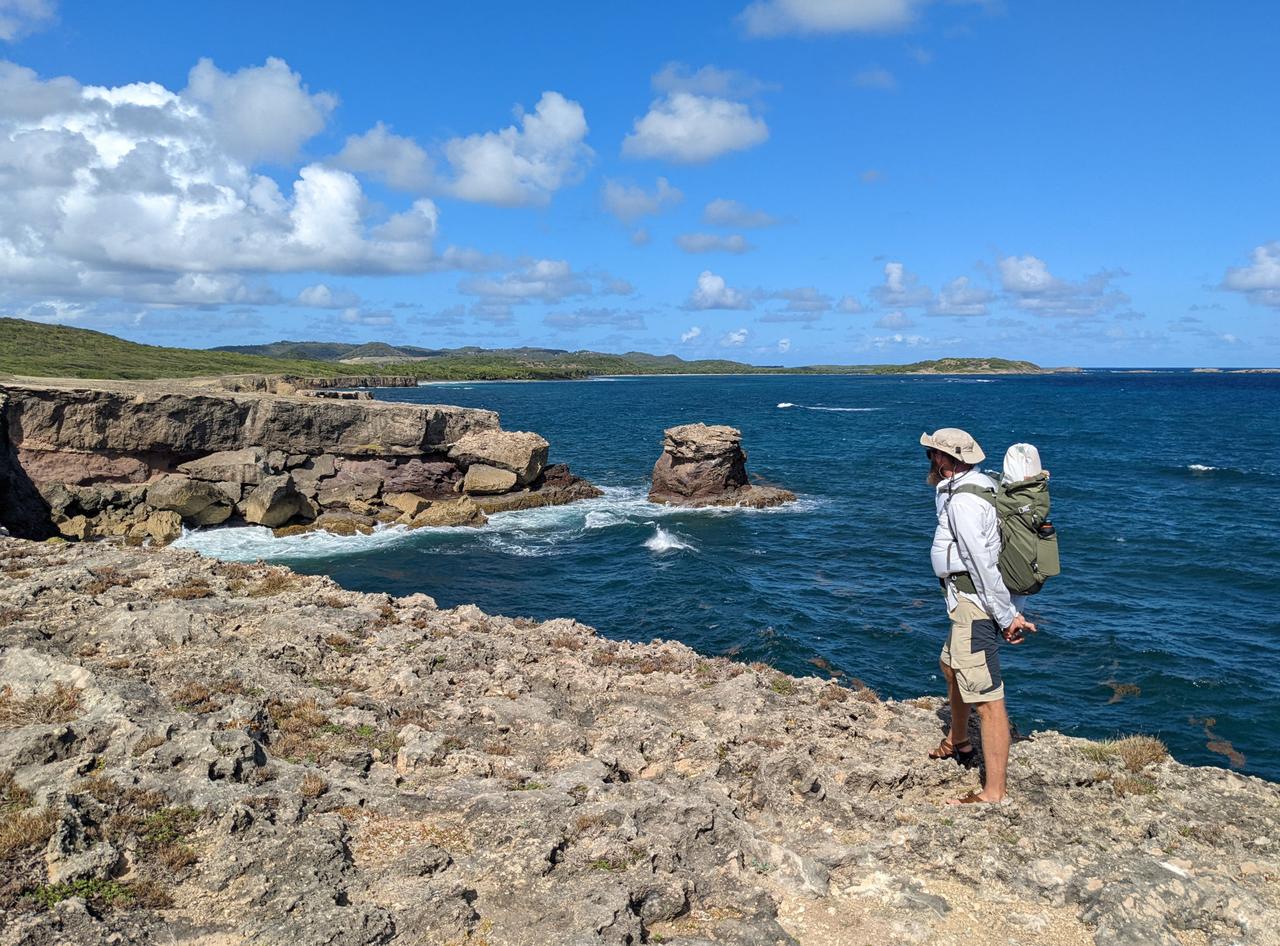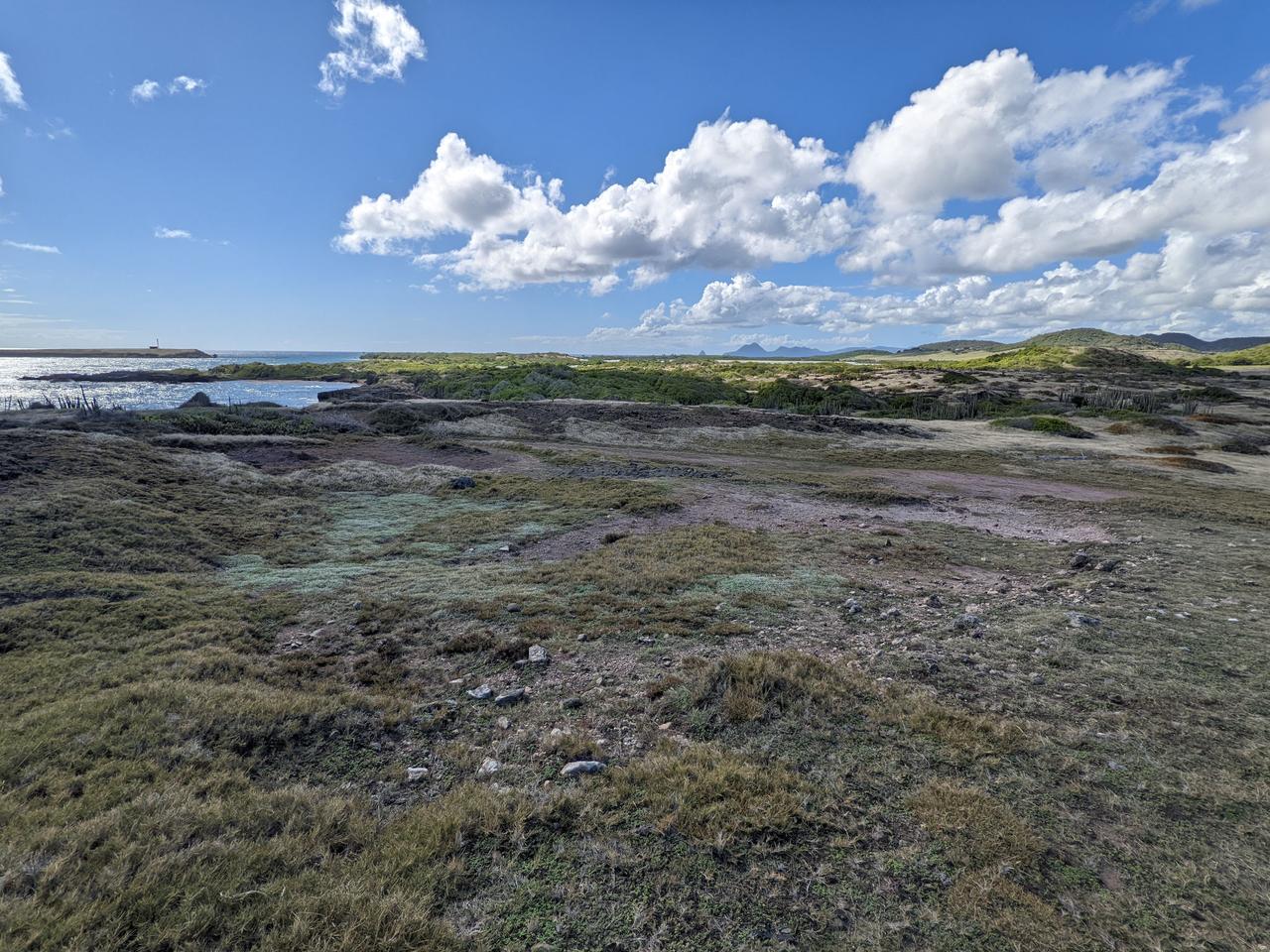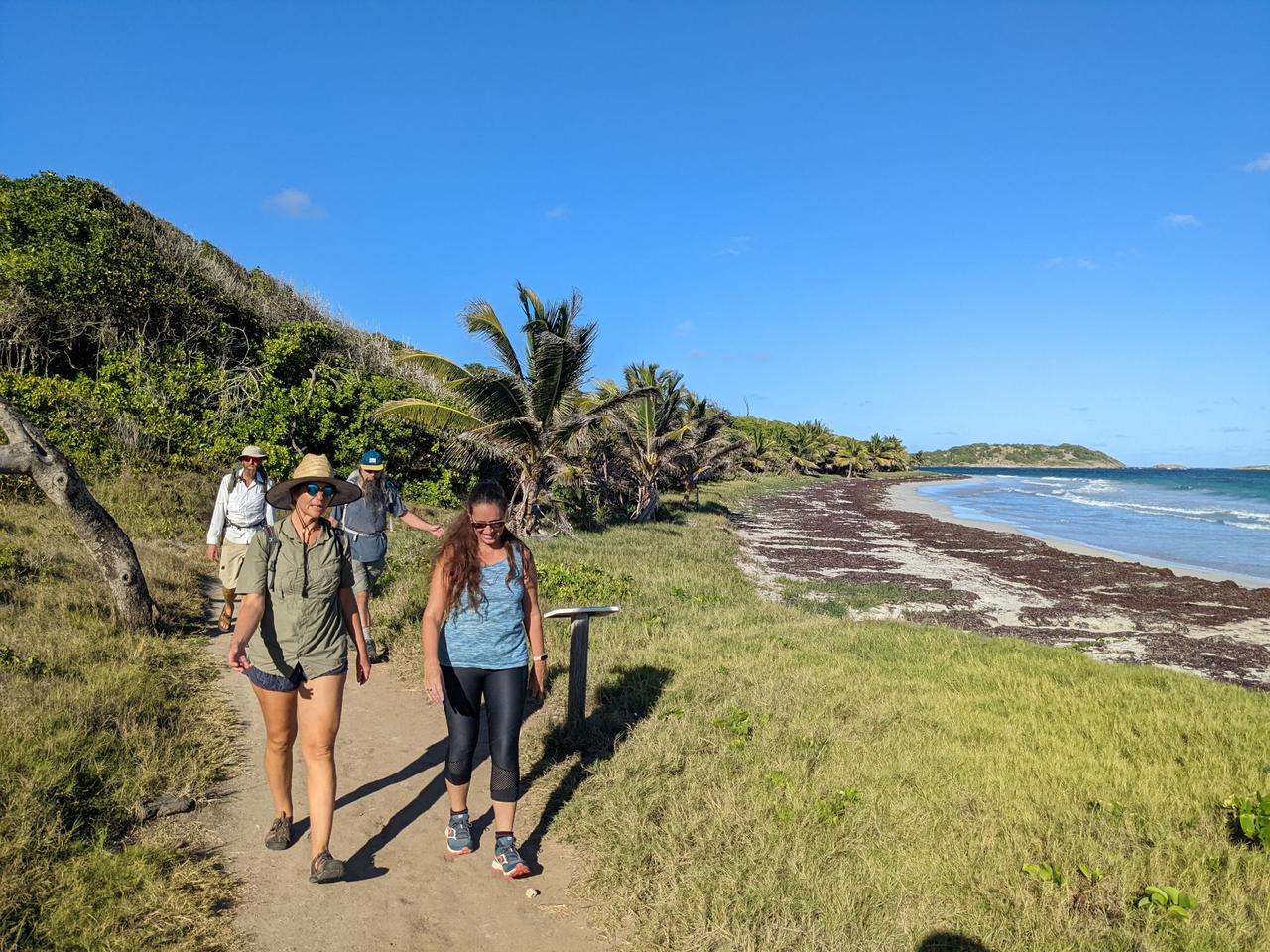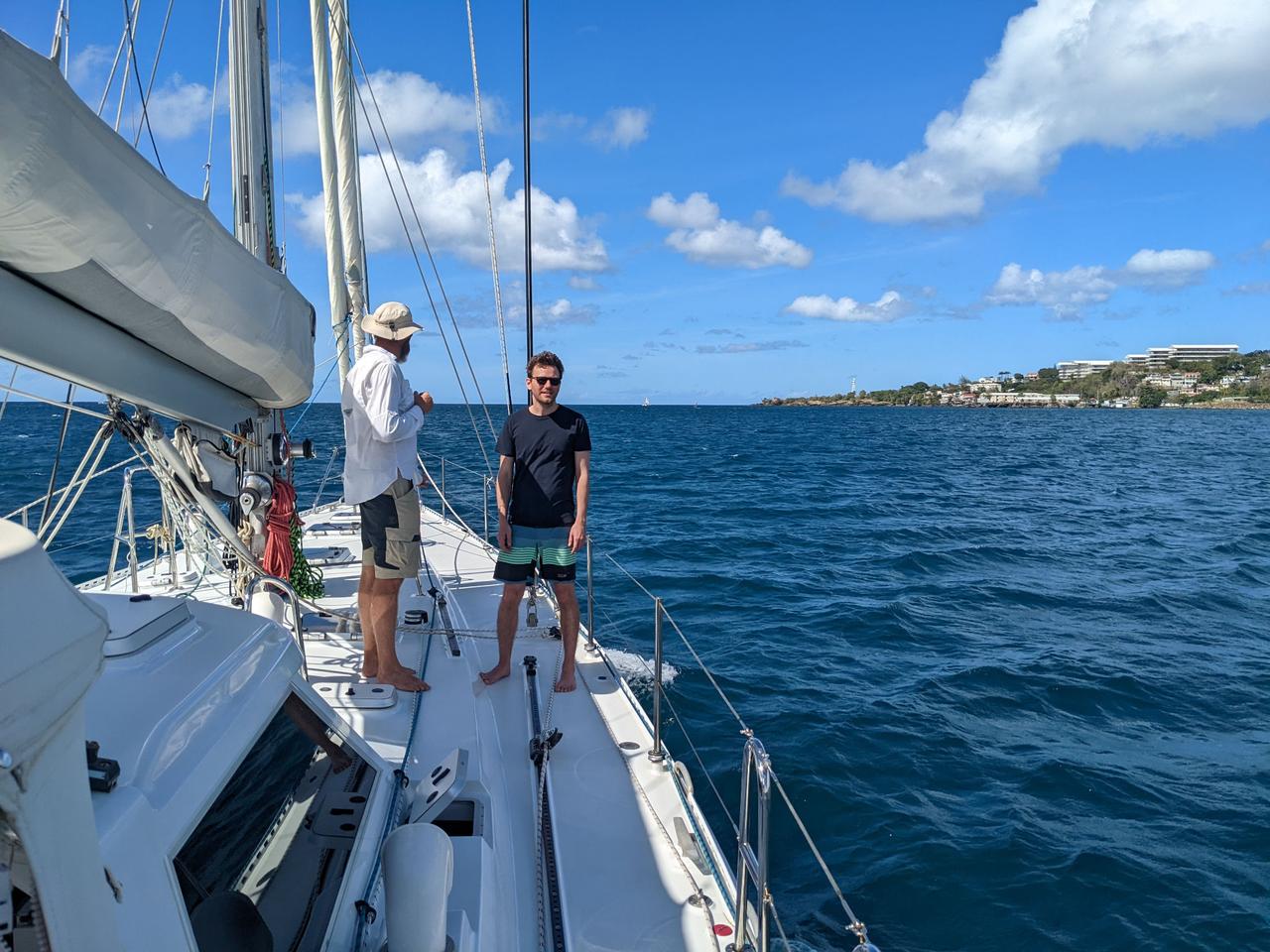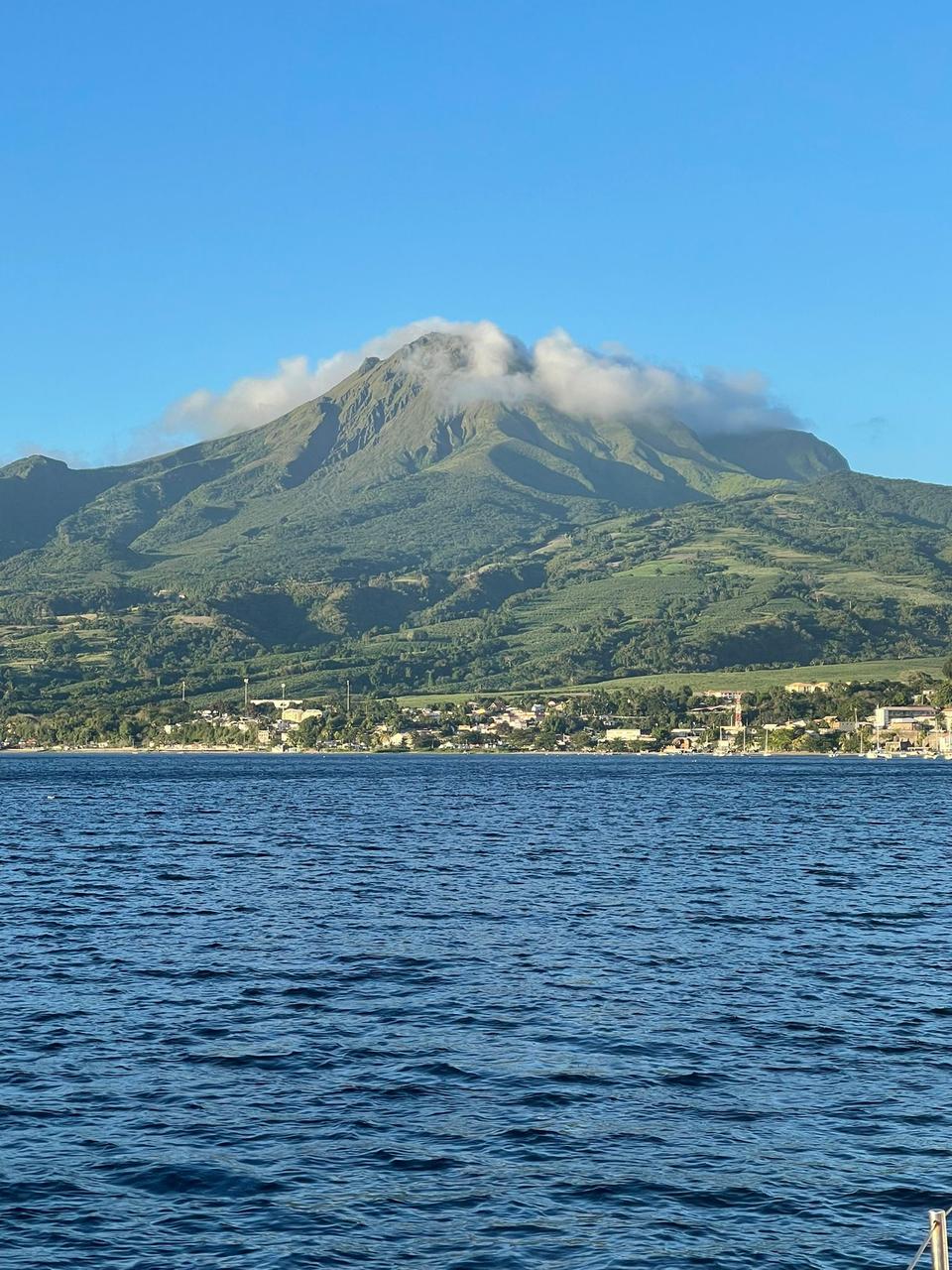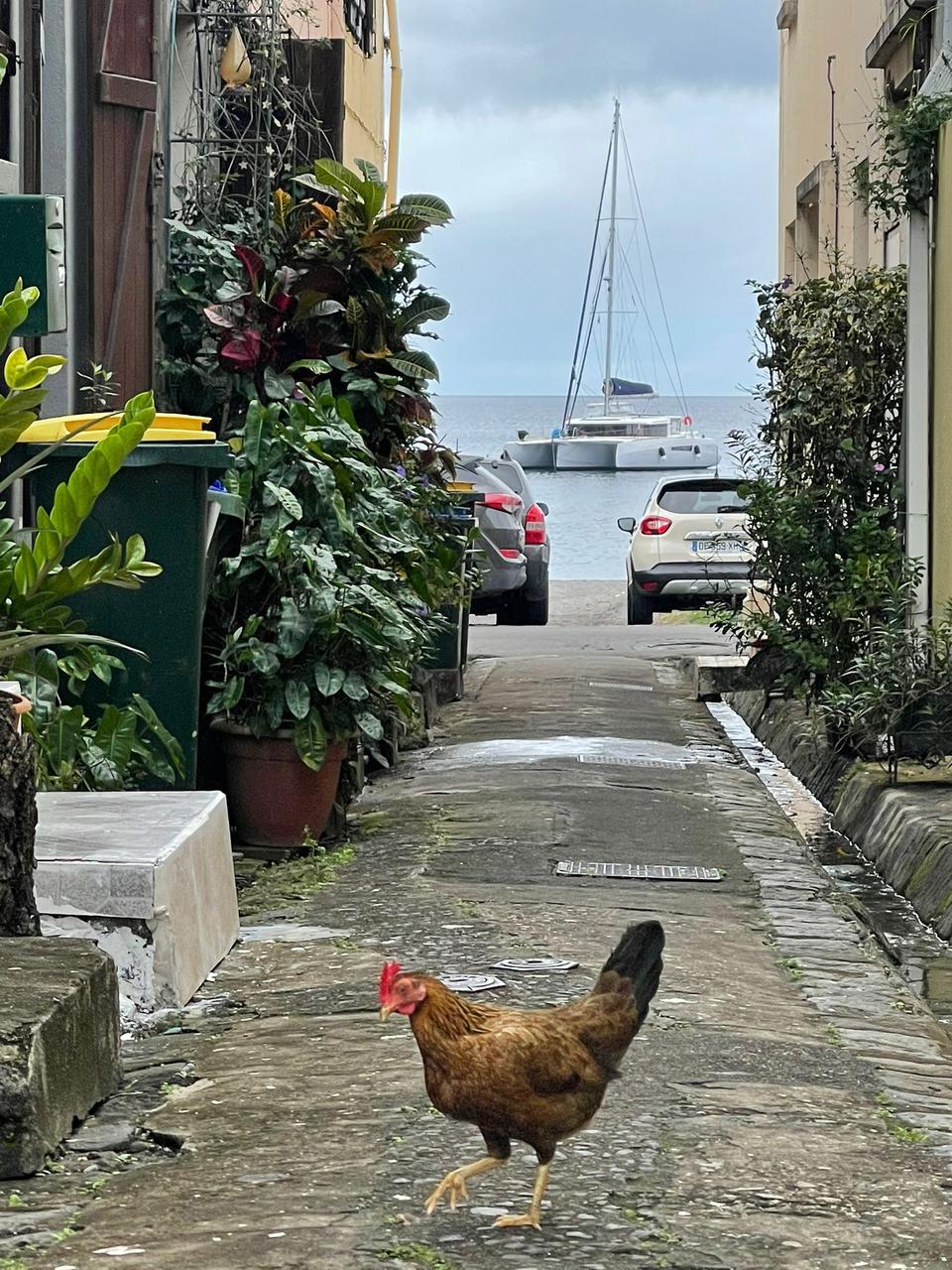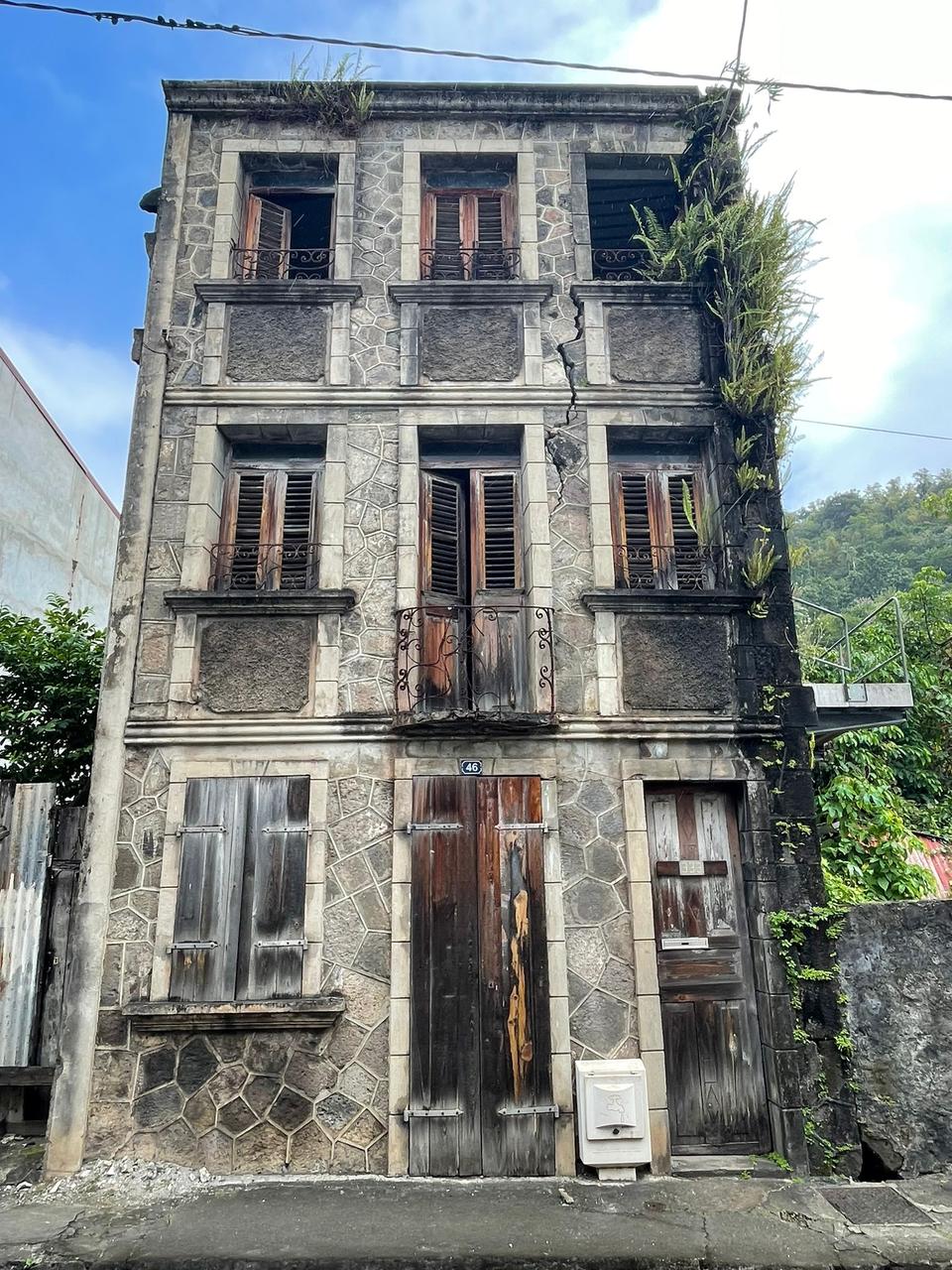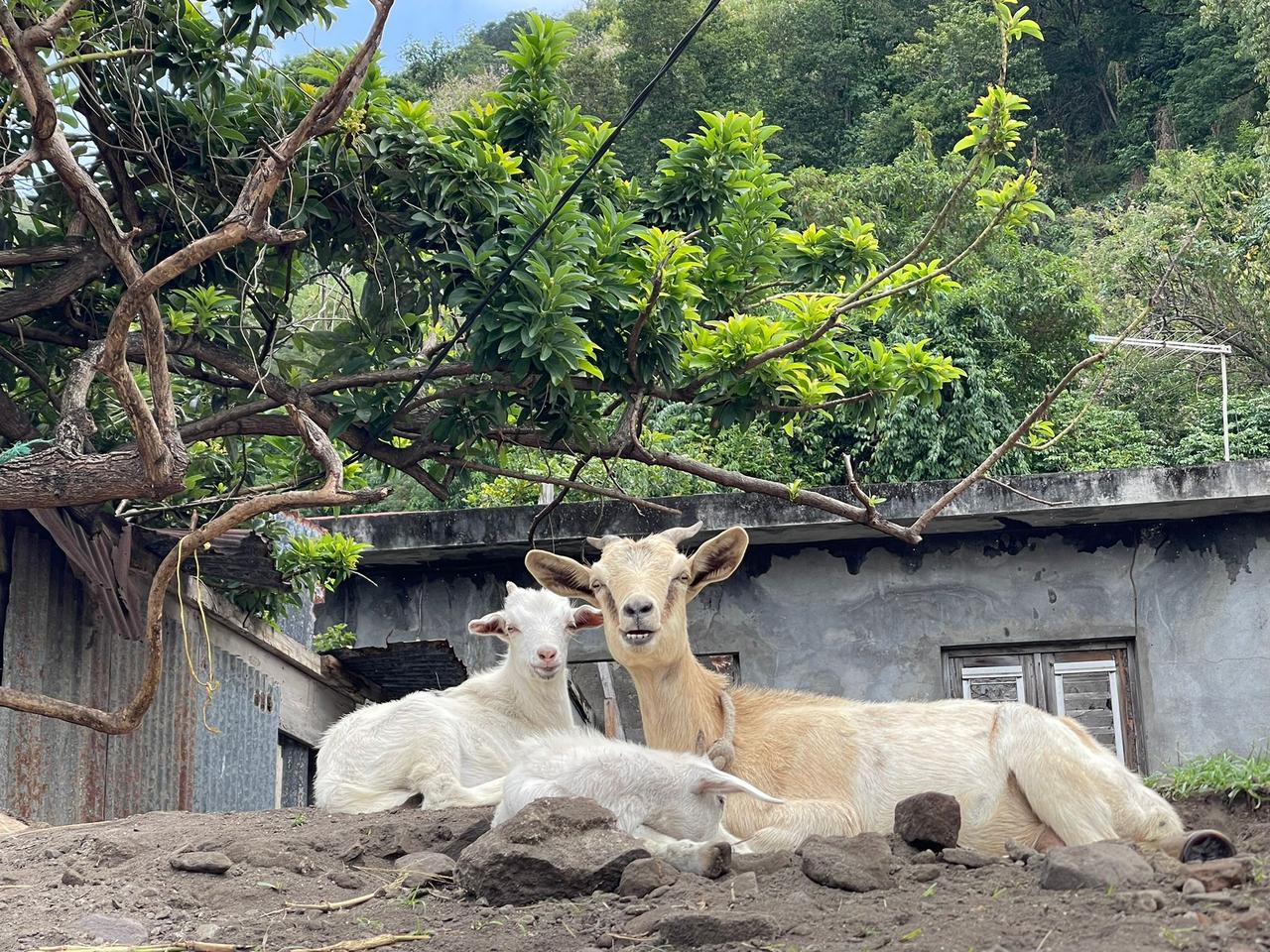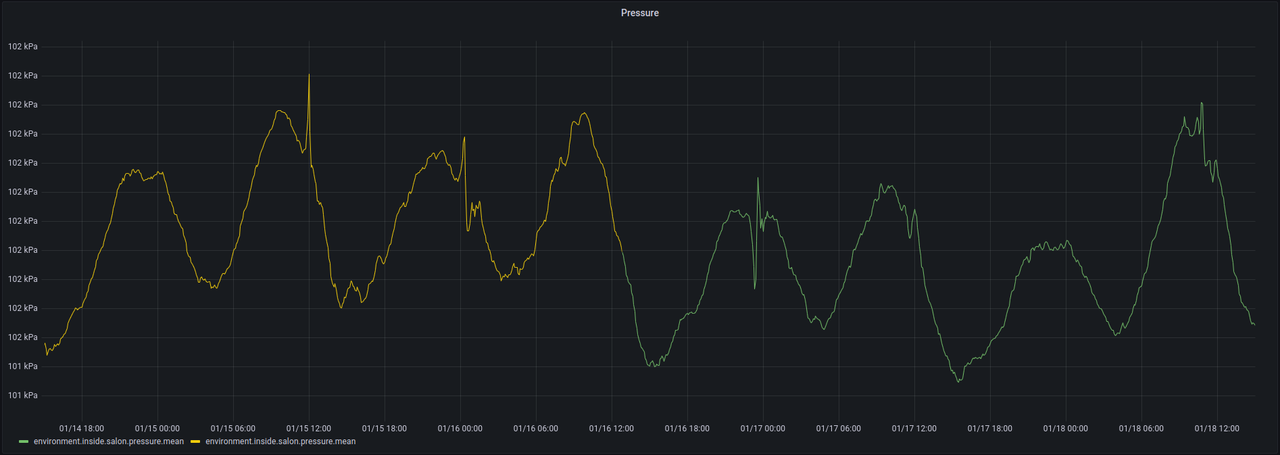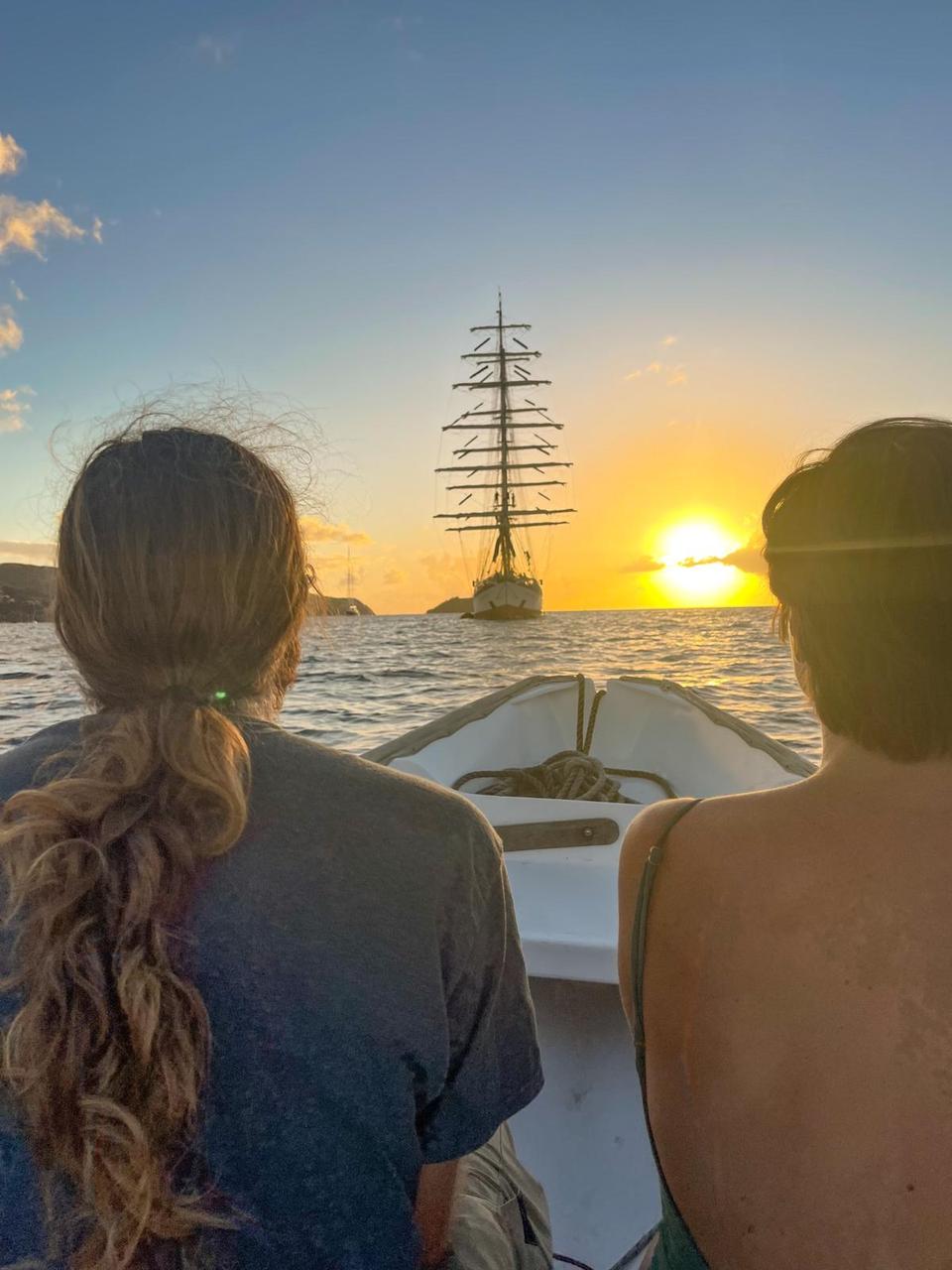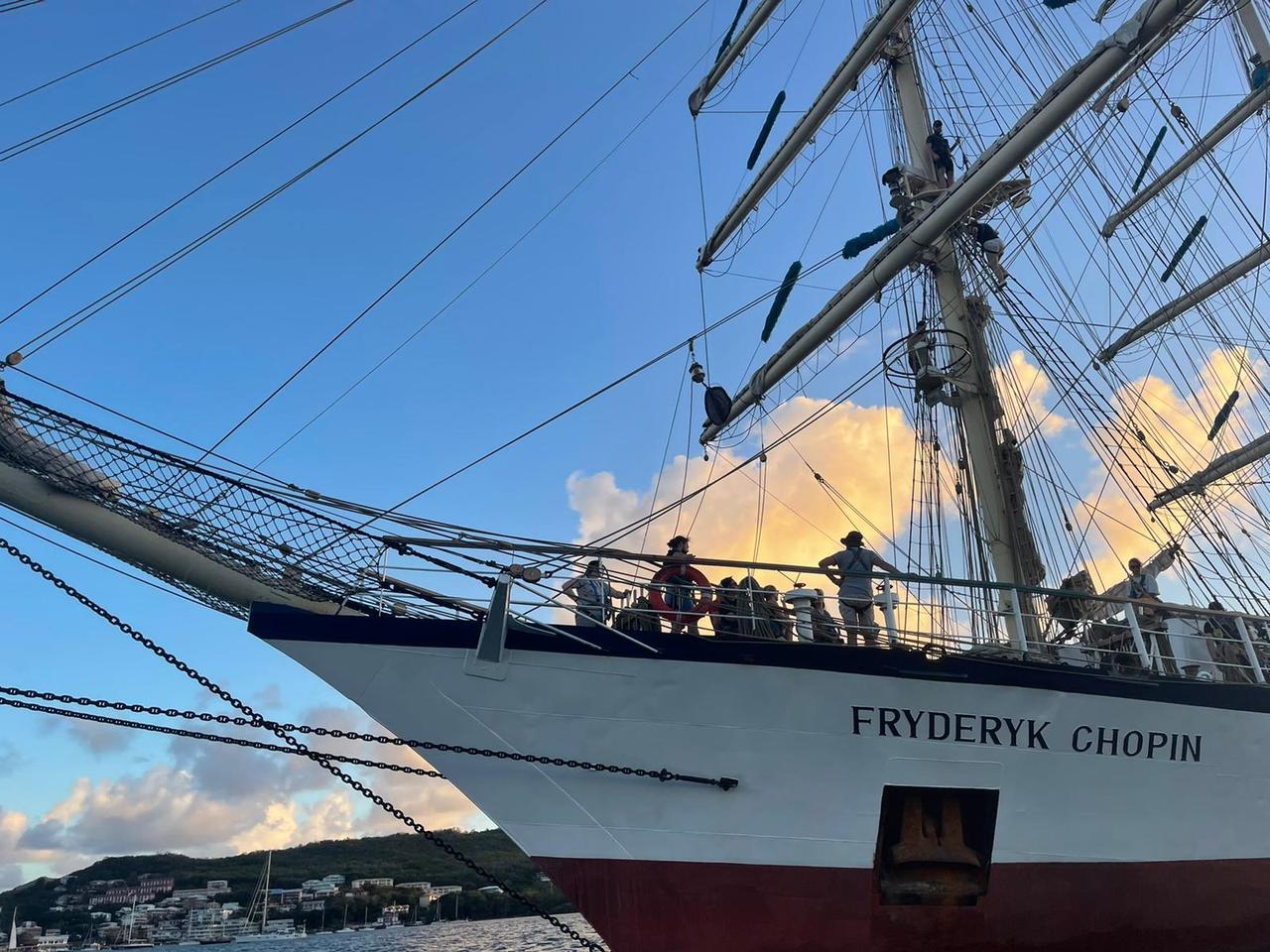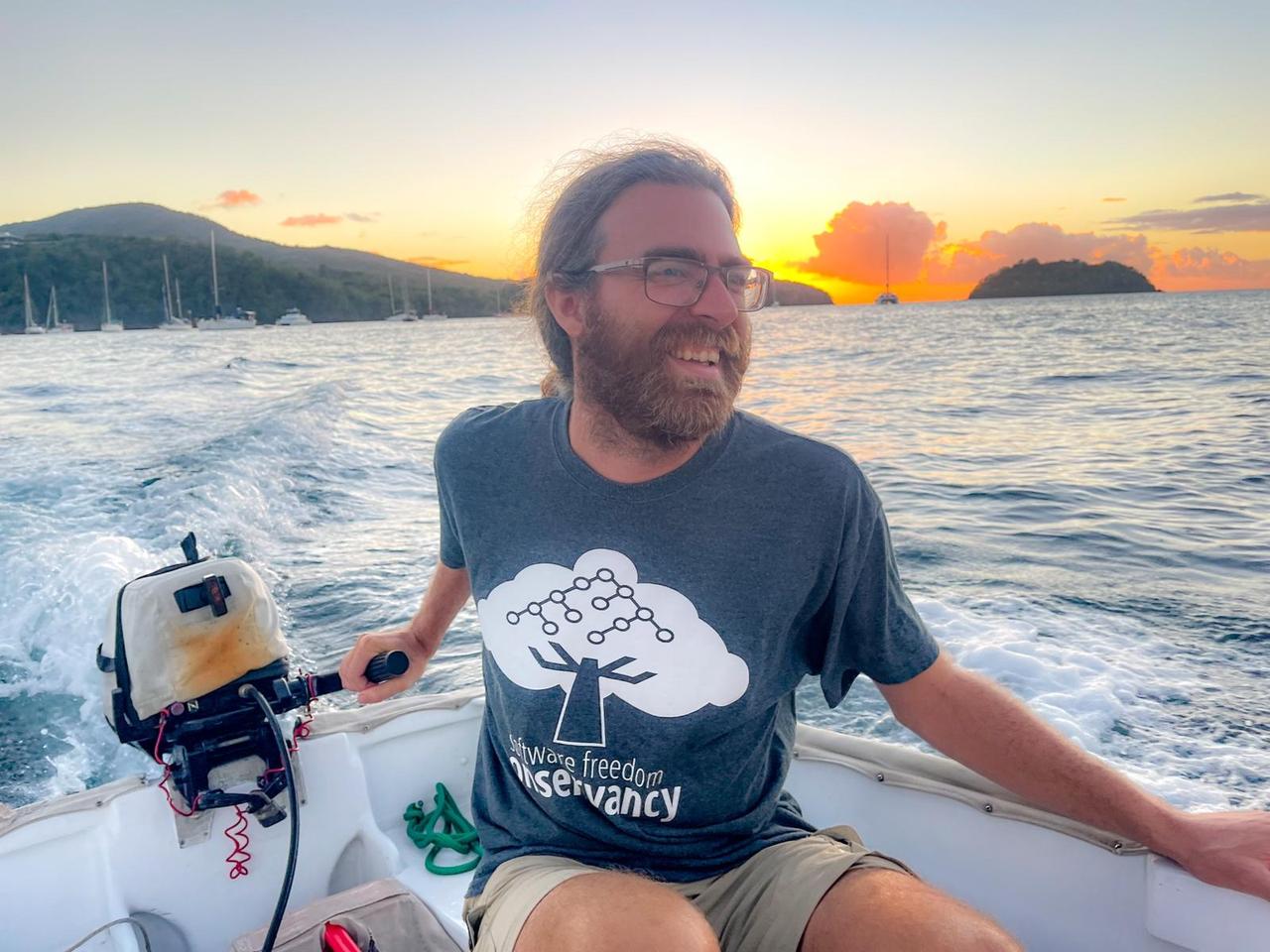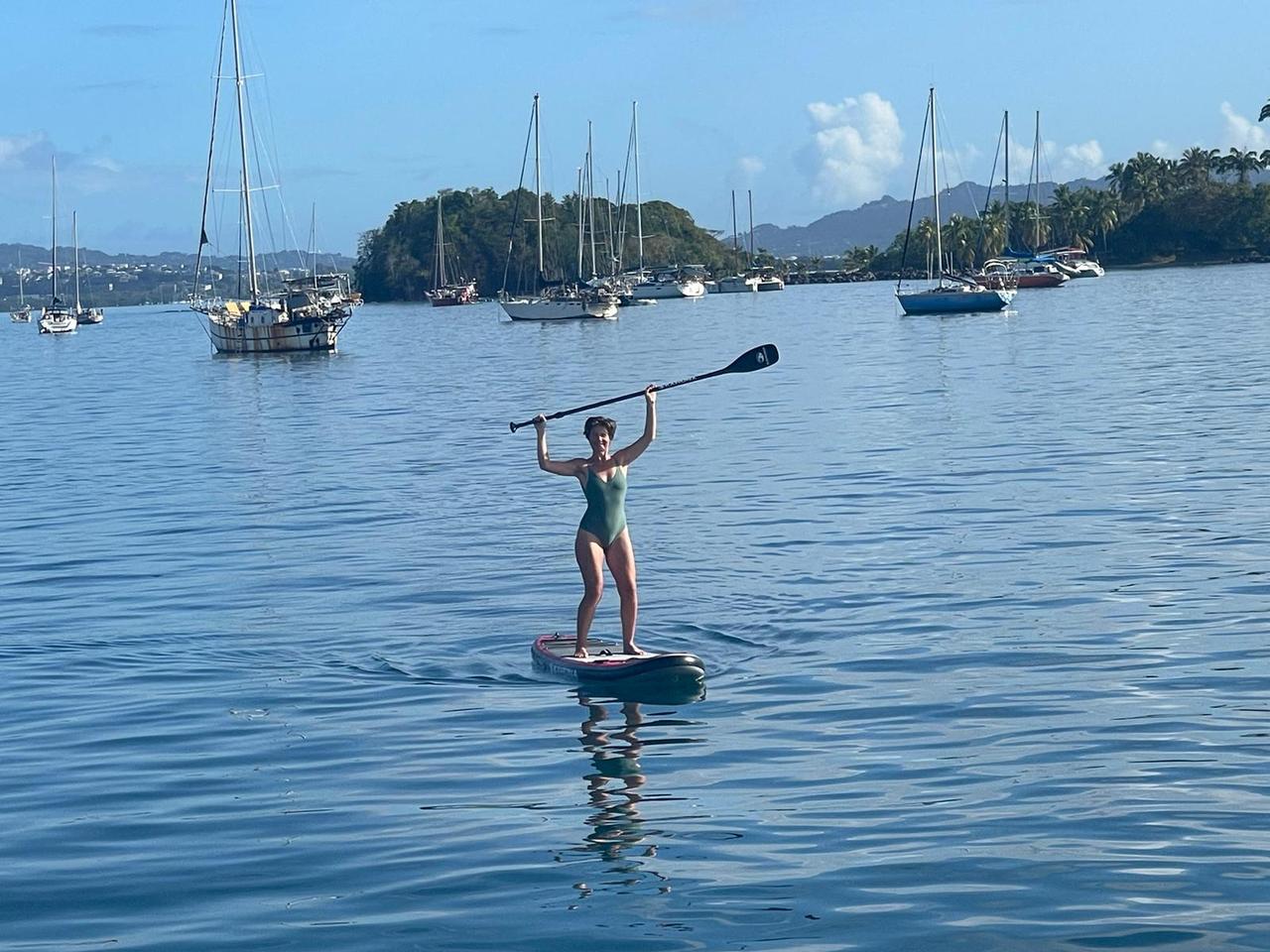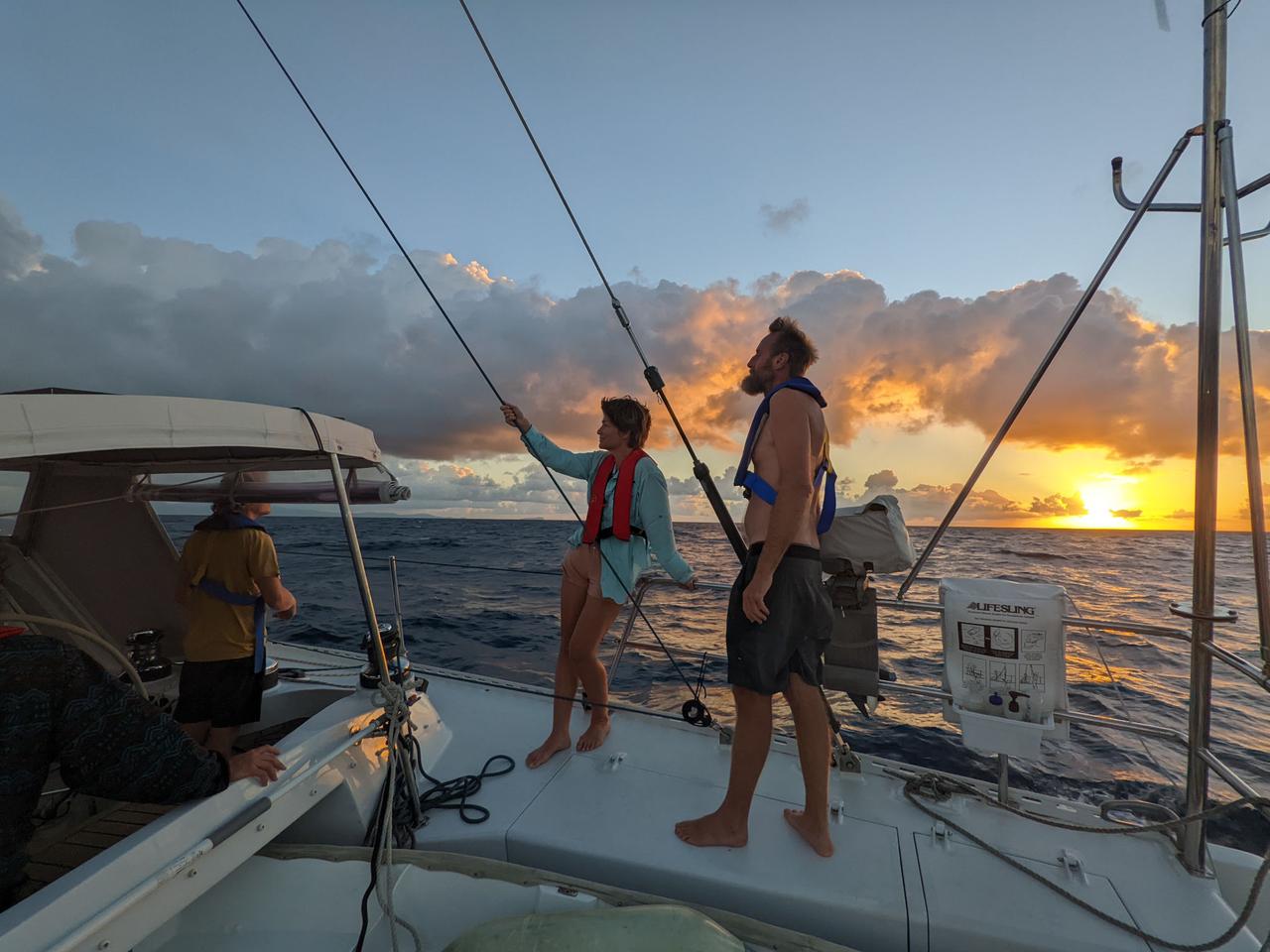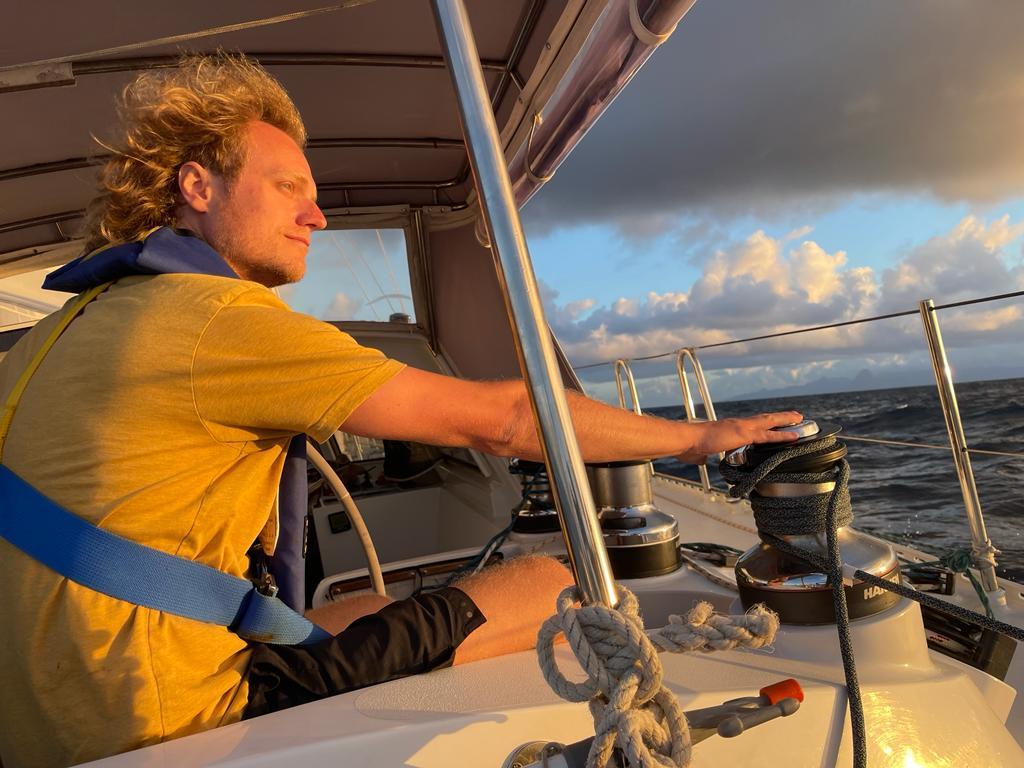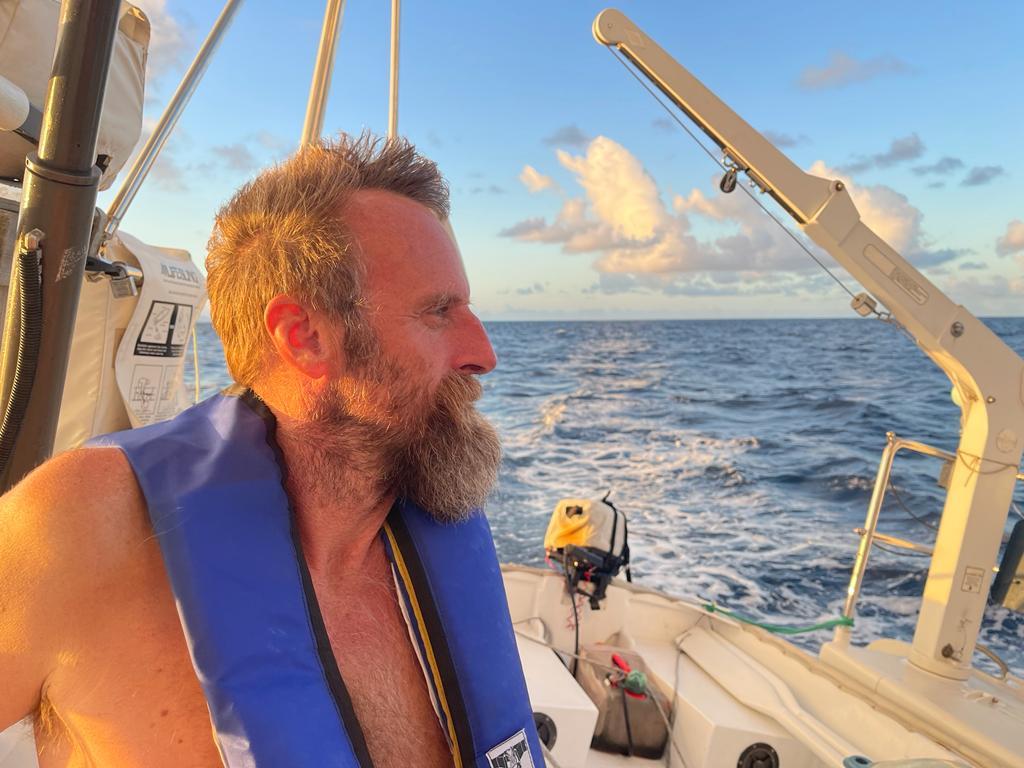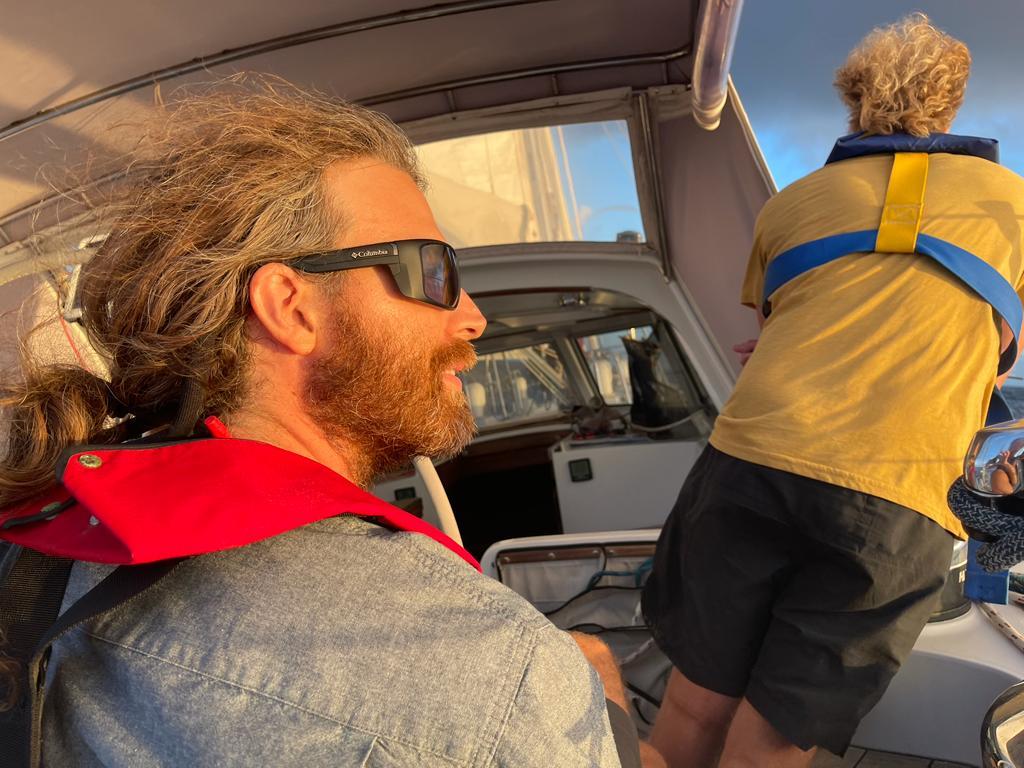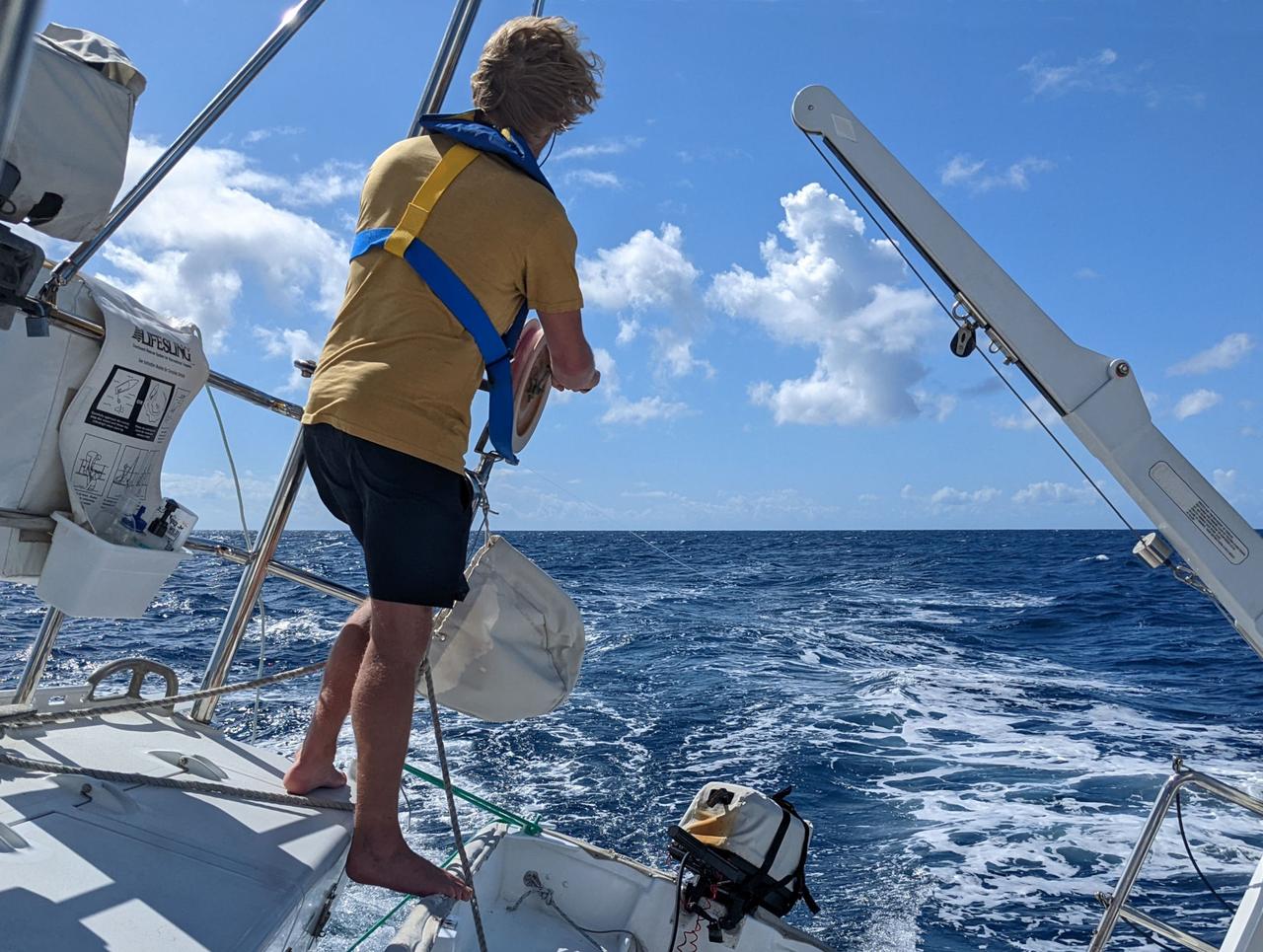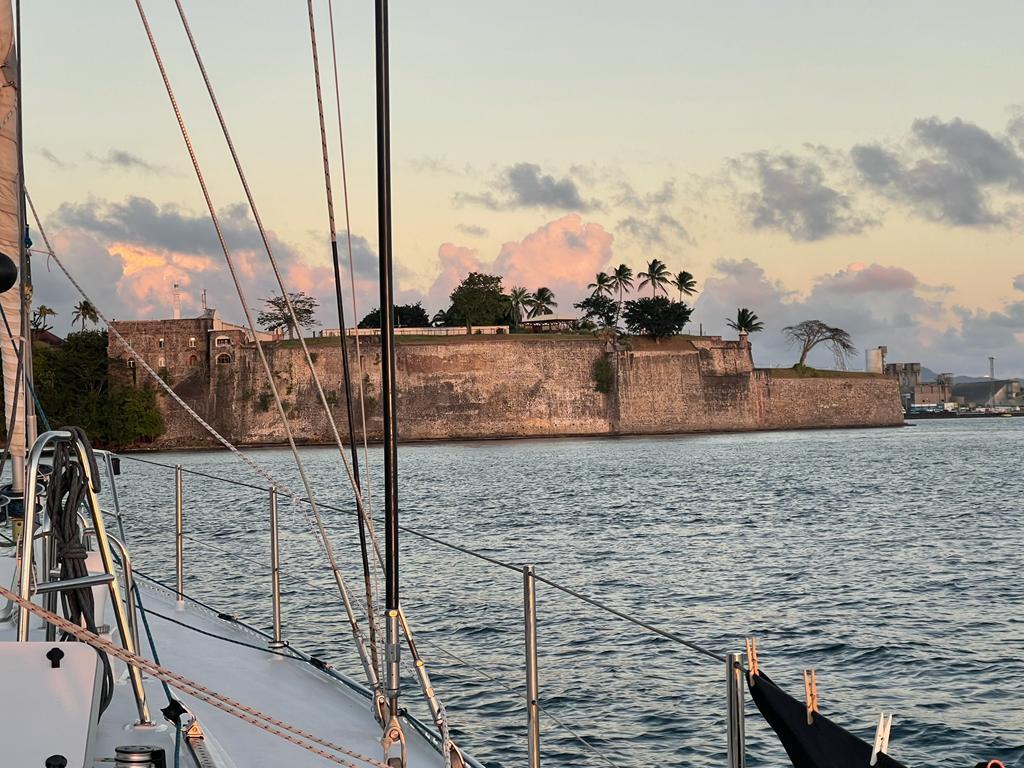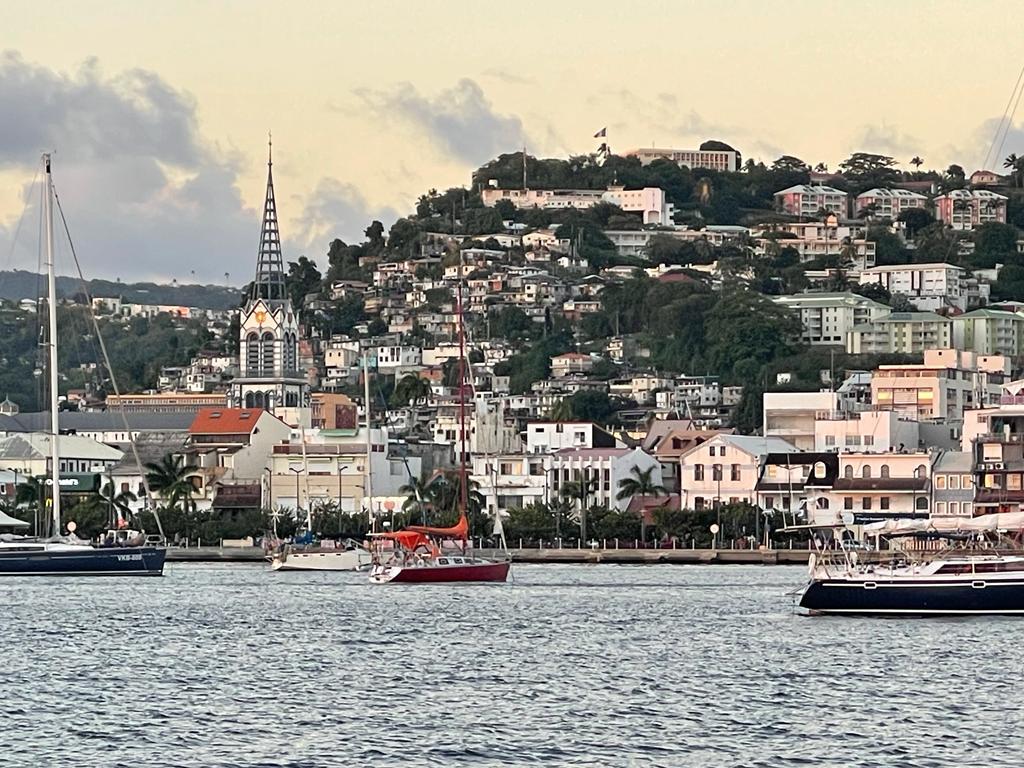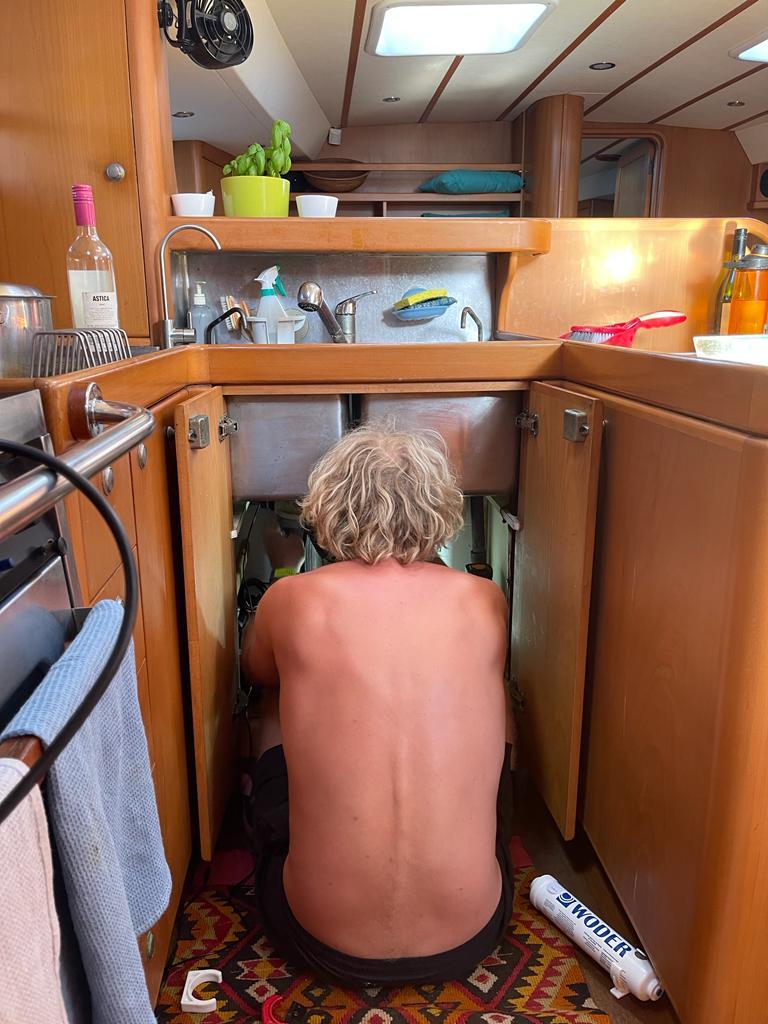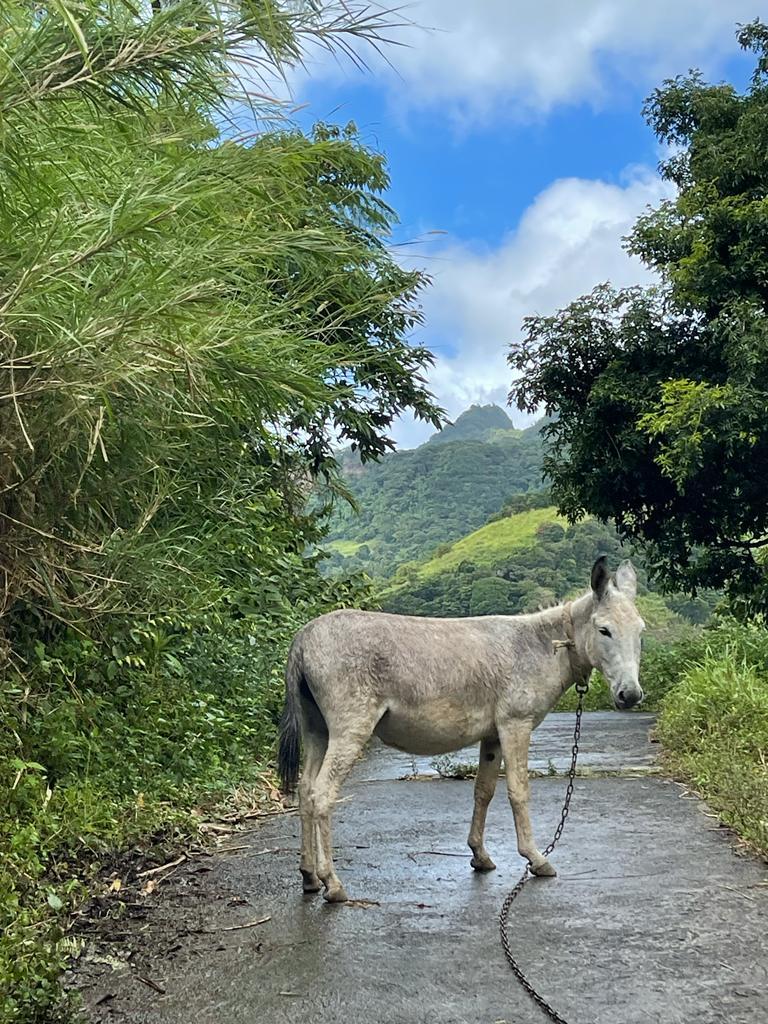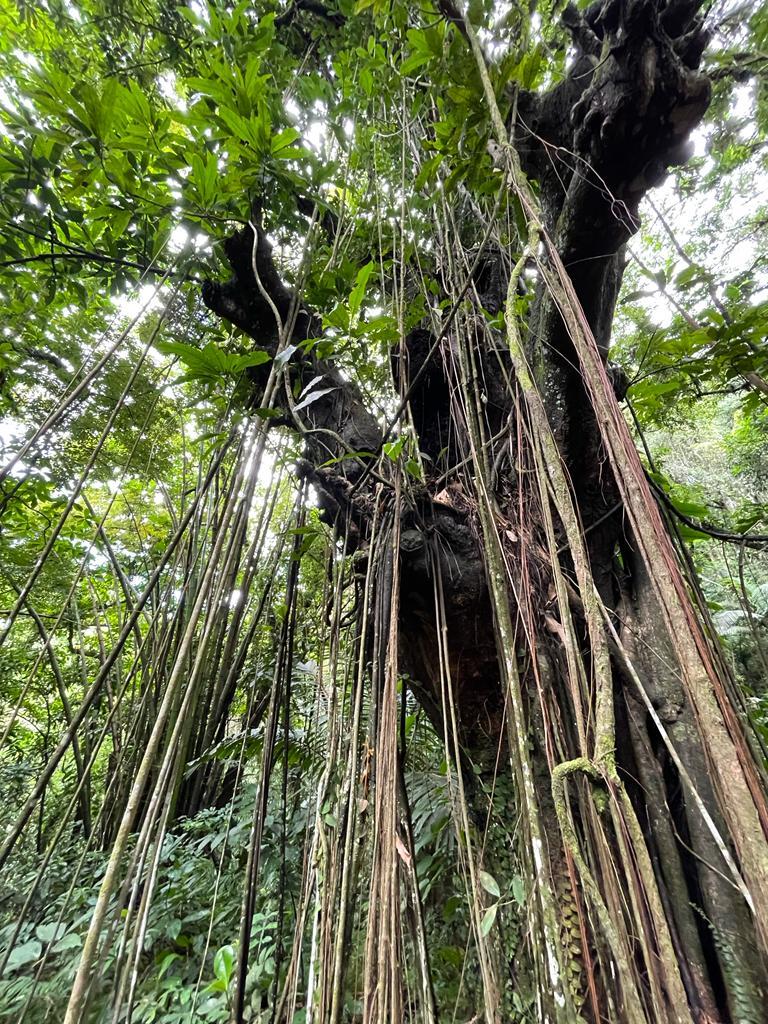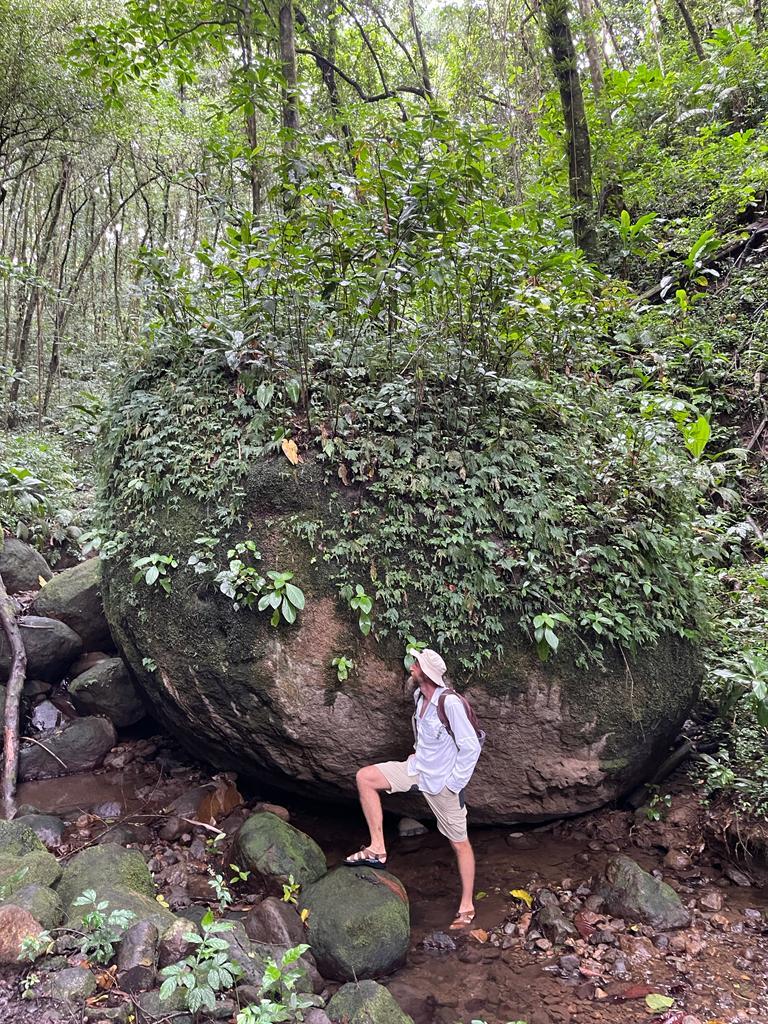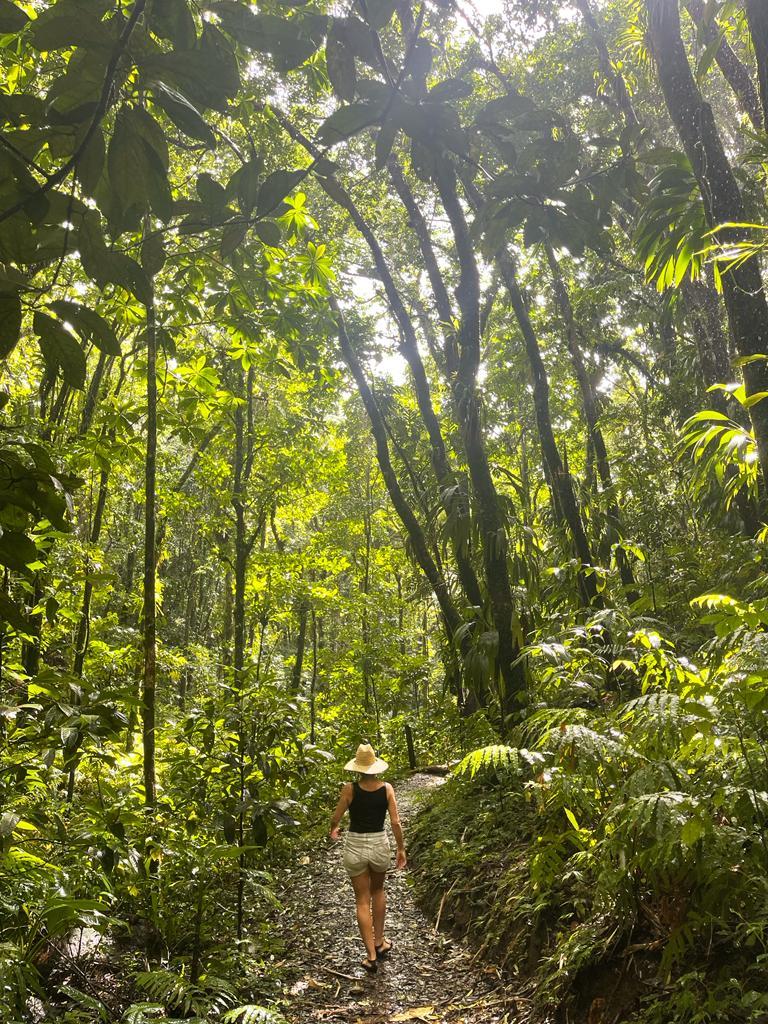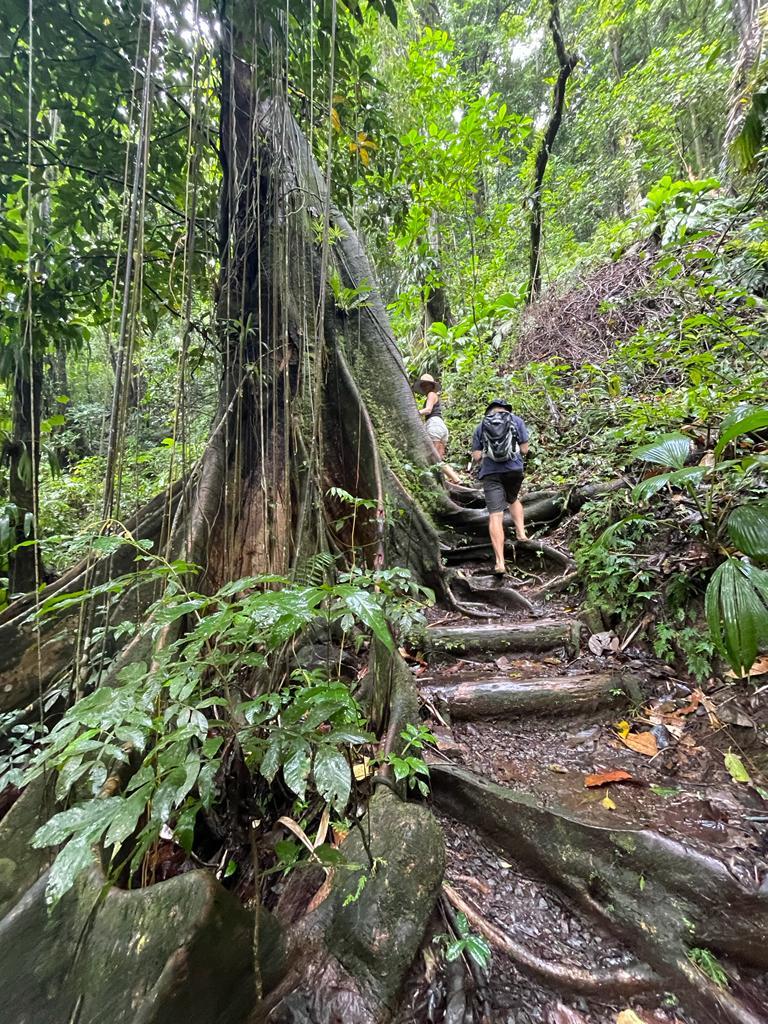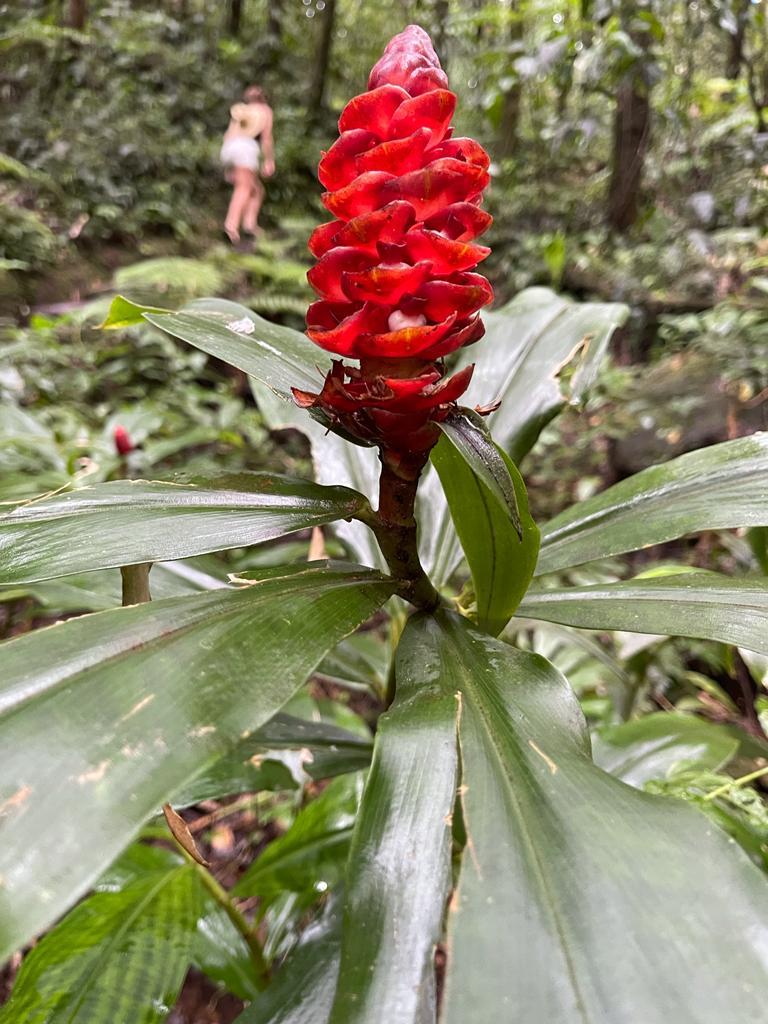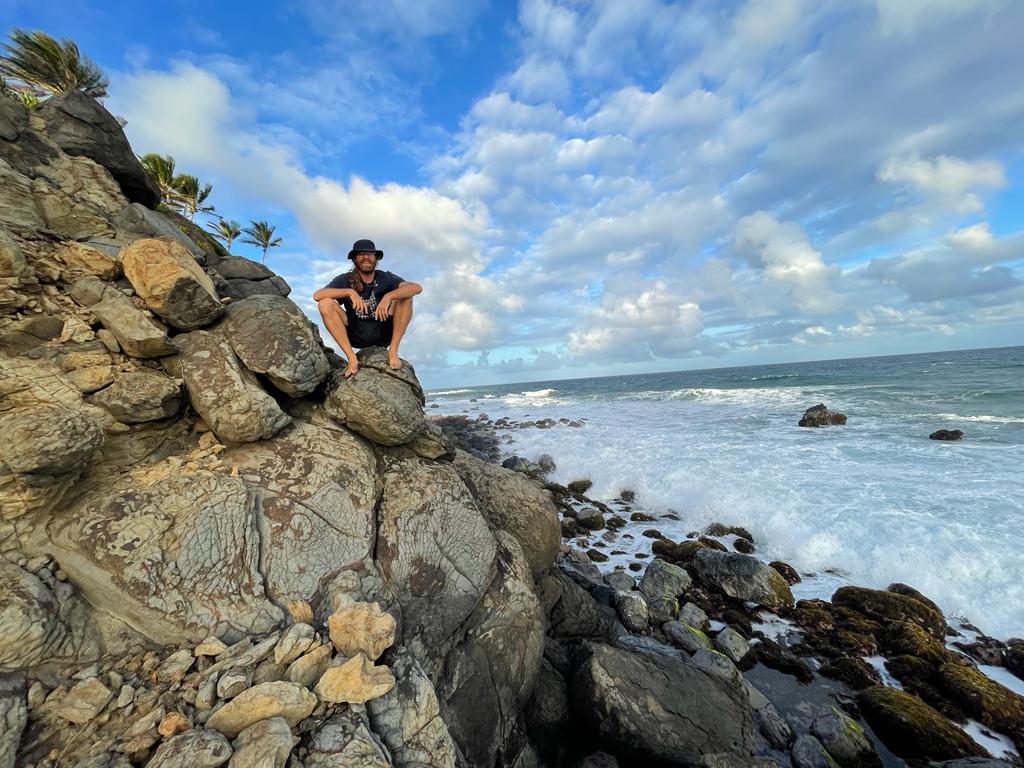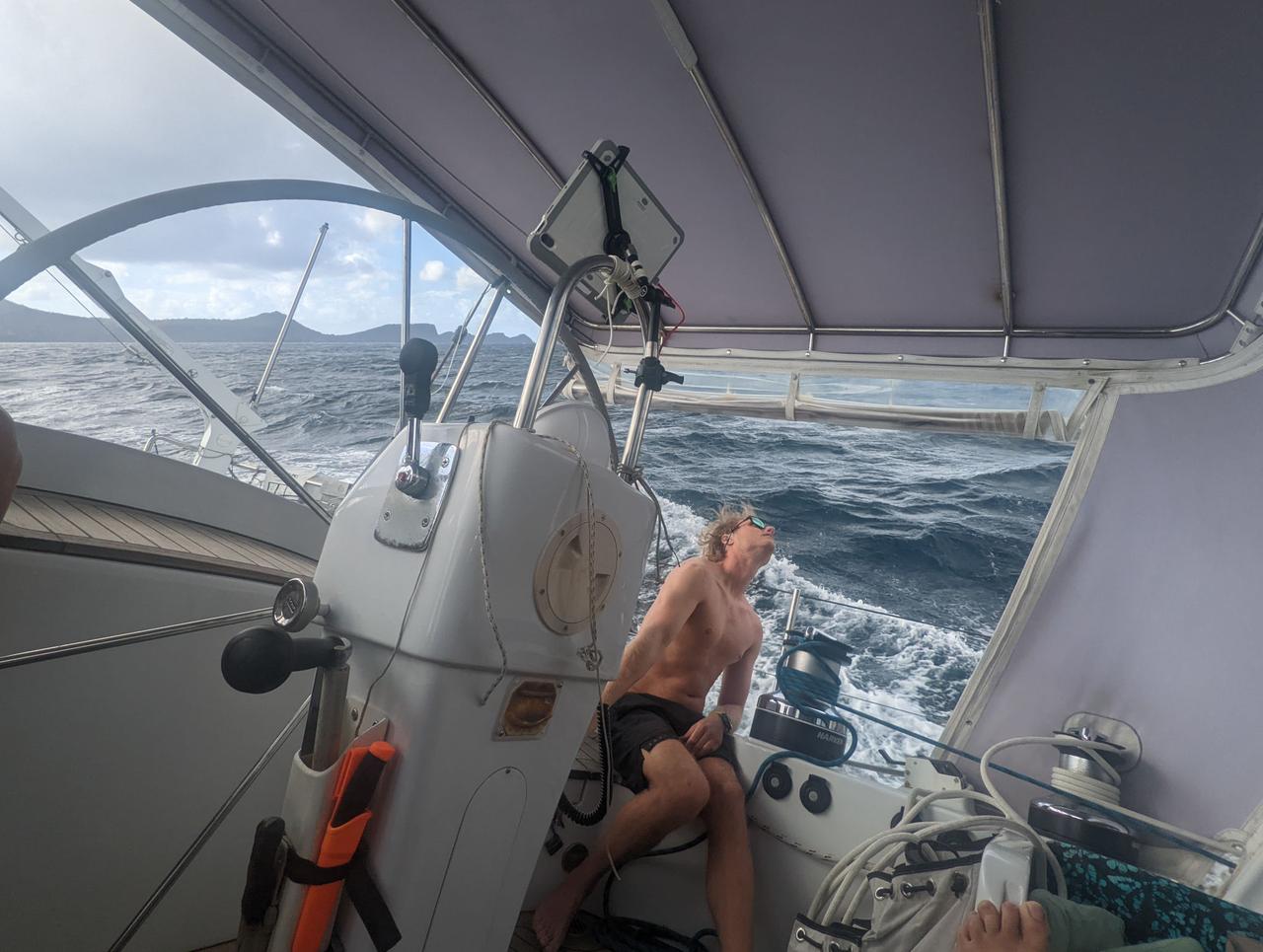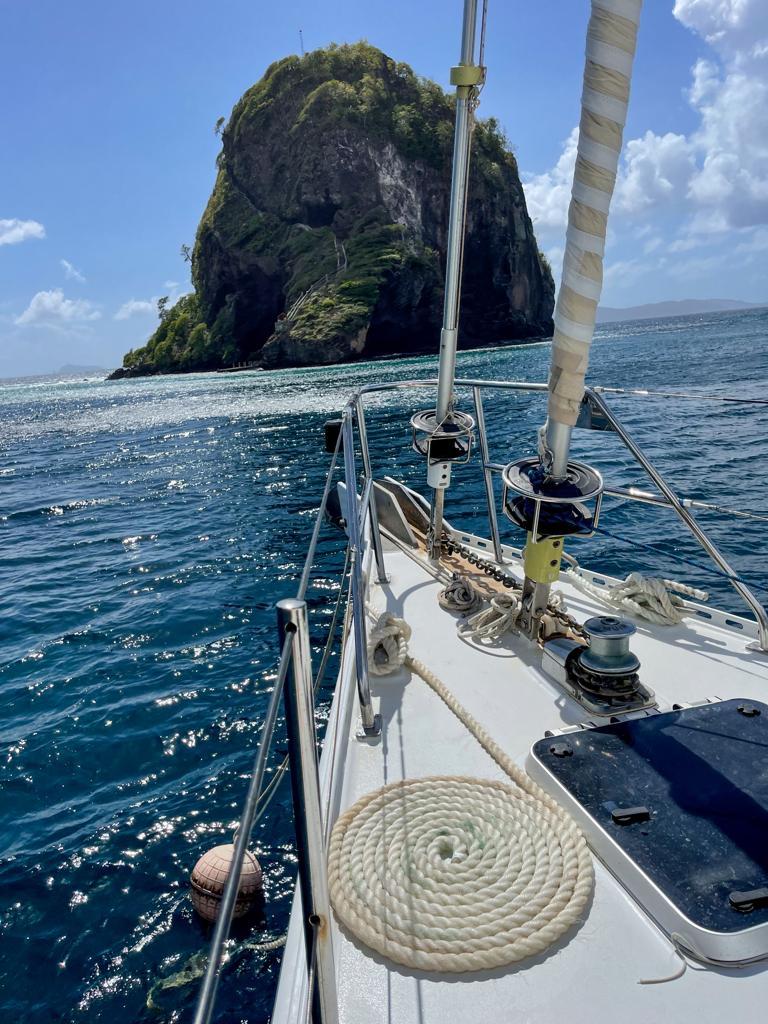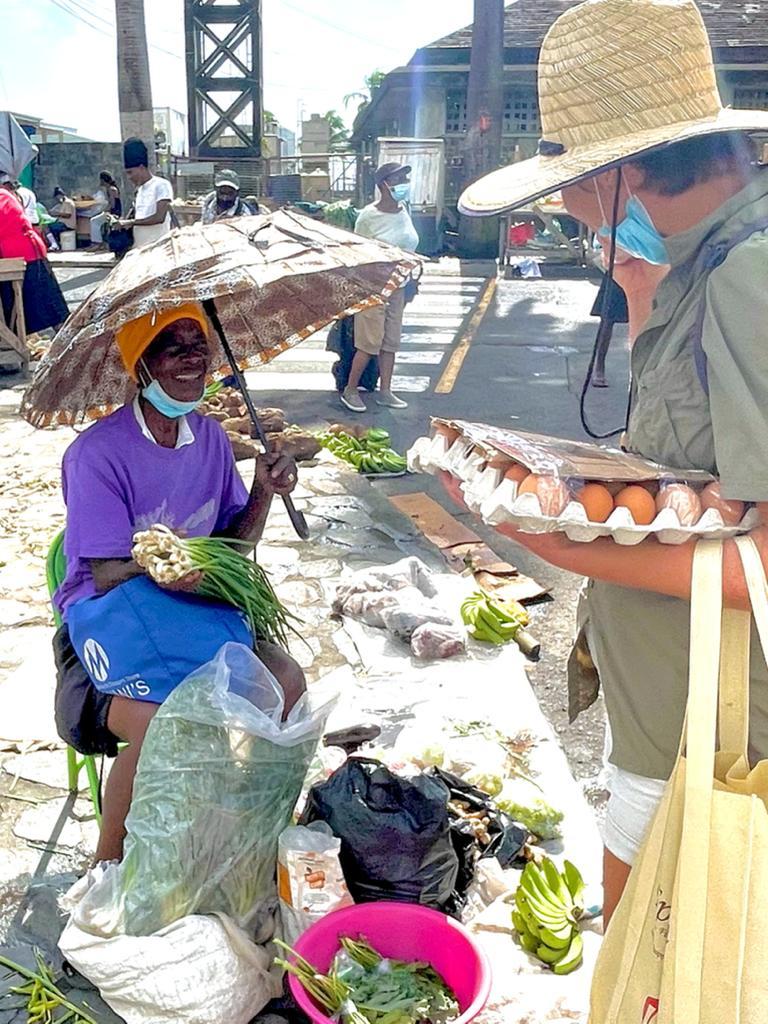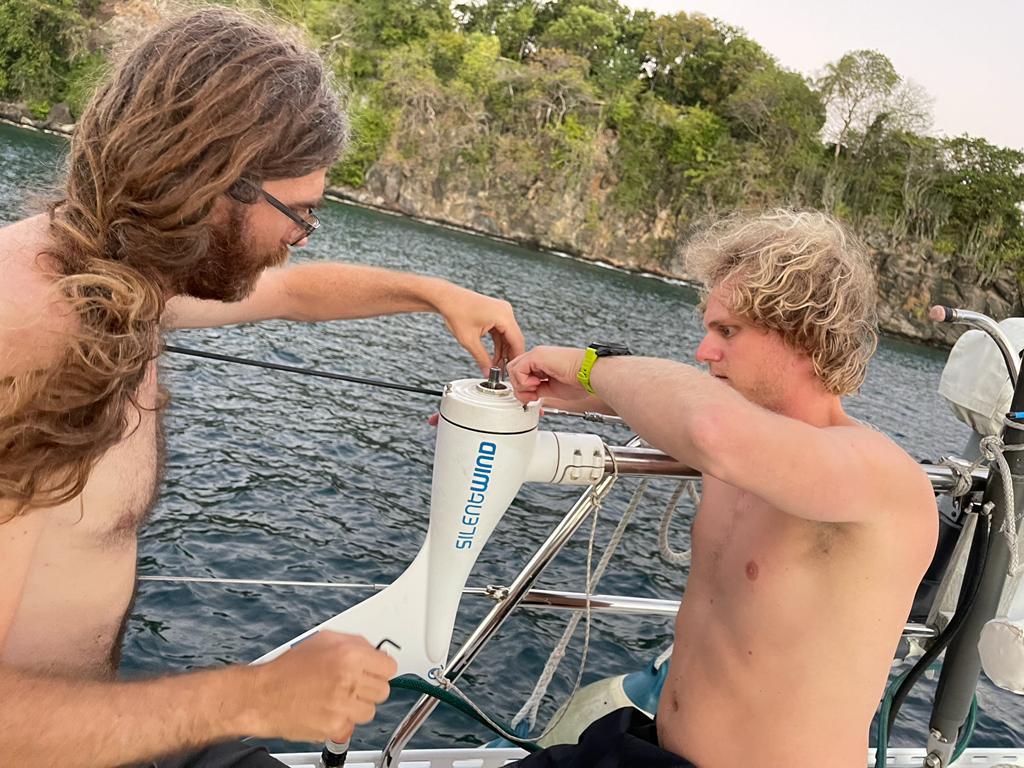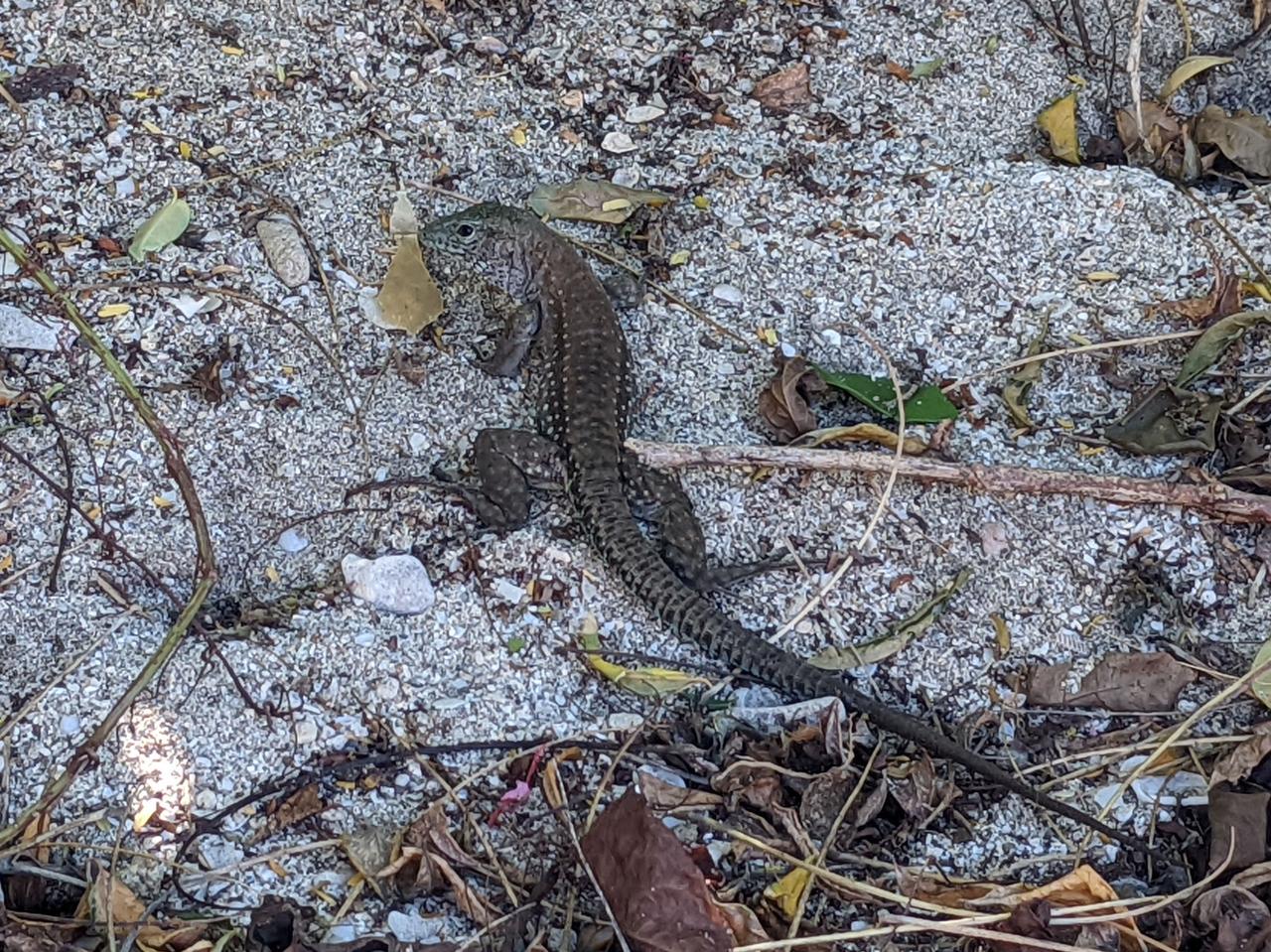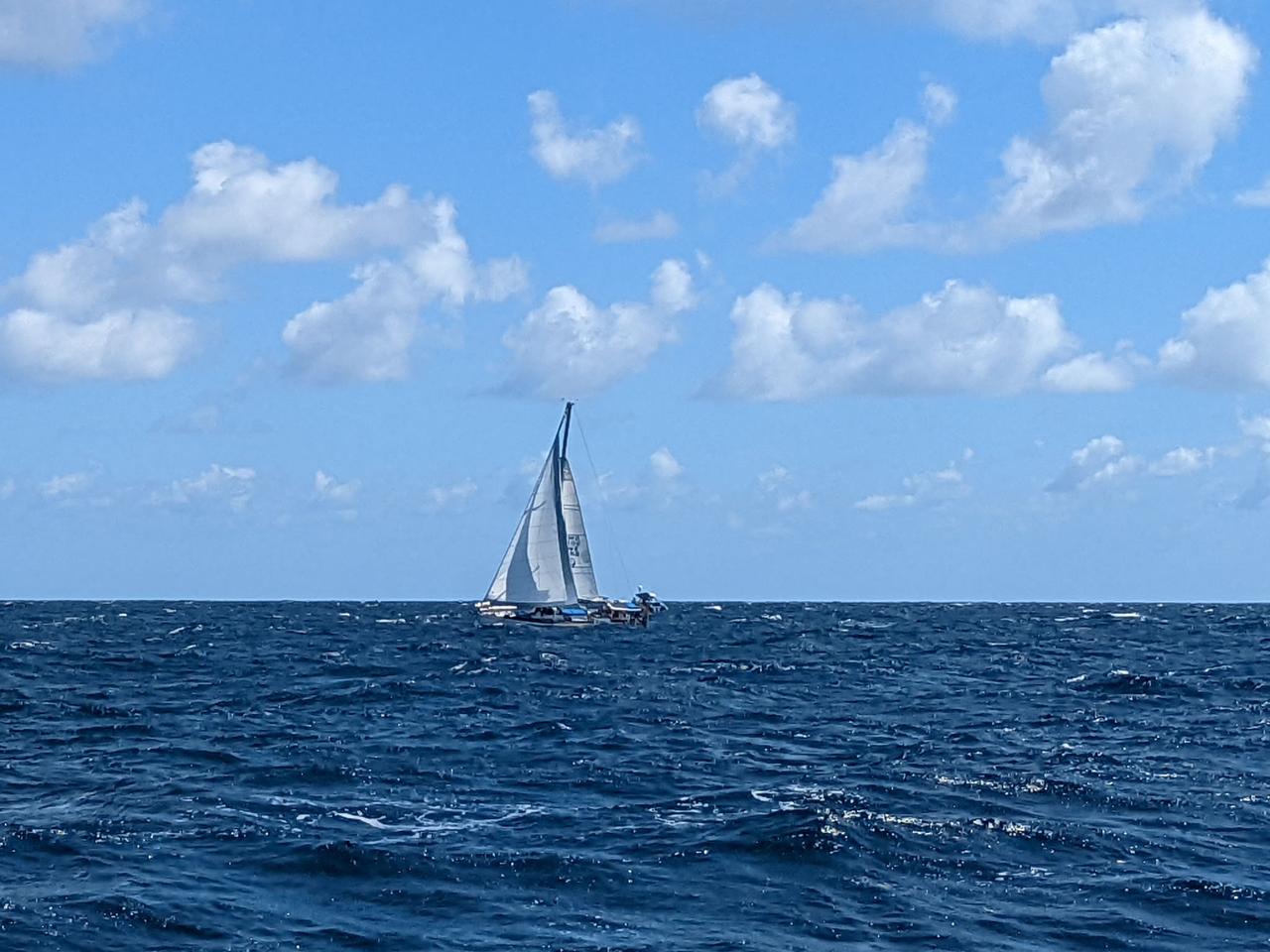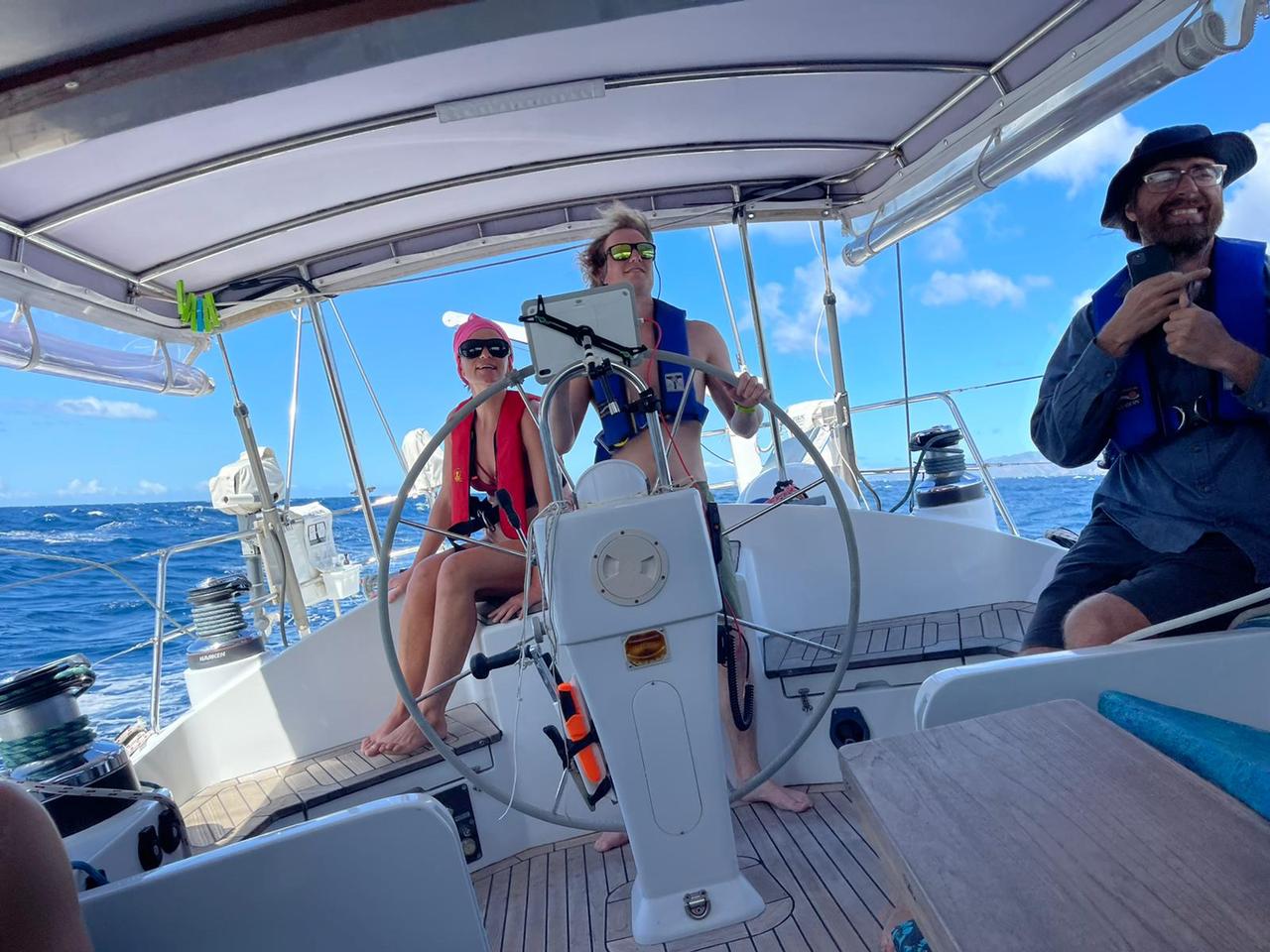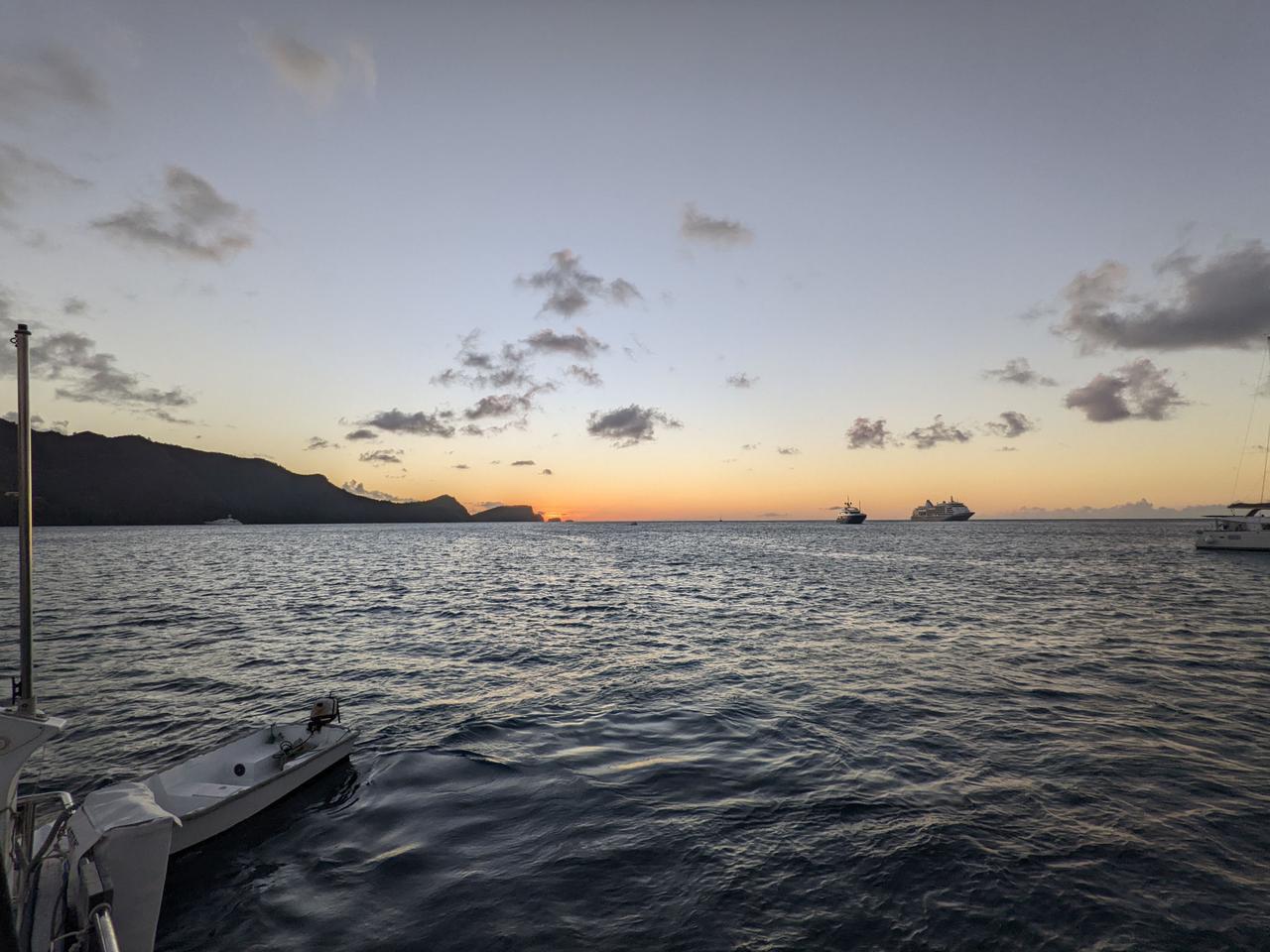After more than a week at anchor in the Tobago Cays, it's time to return
to civilization. It's been a good week, most other boats don't stay that
long, so we've seen them all come and go. Super-yachts, Tall Ships,
>100ft monohulls, charter catamarans, families, and a tiny little 20-odd
ft monohull painted a as fish, with a nudist French couple on it.
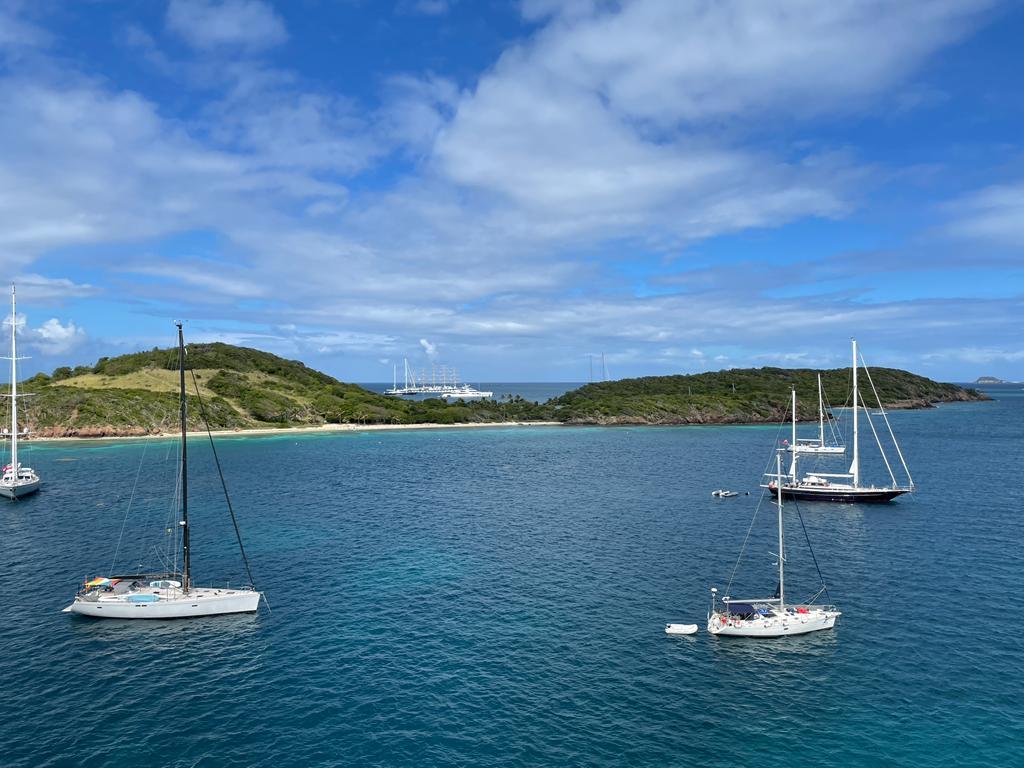
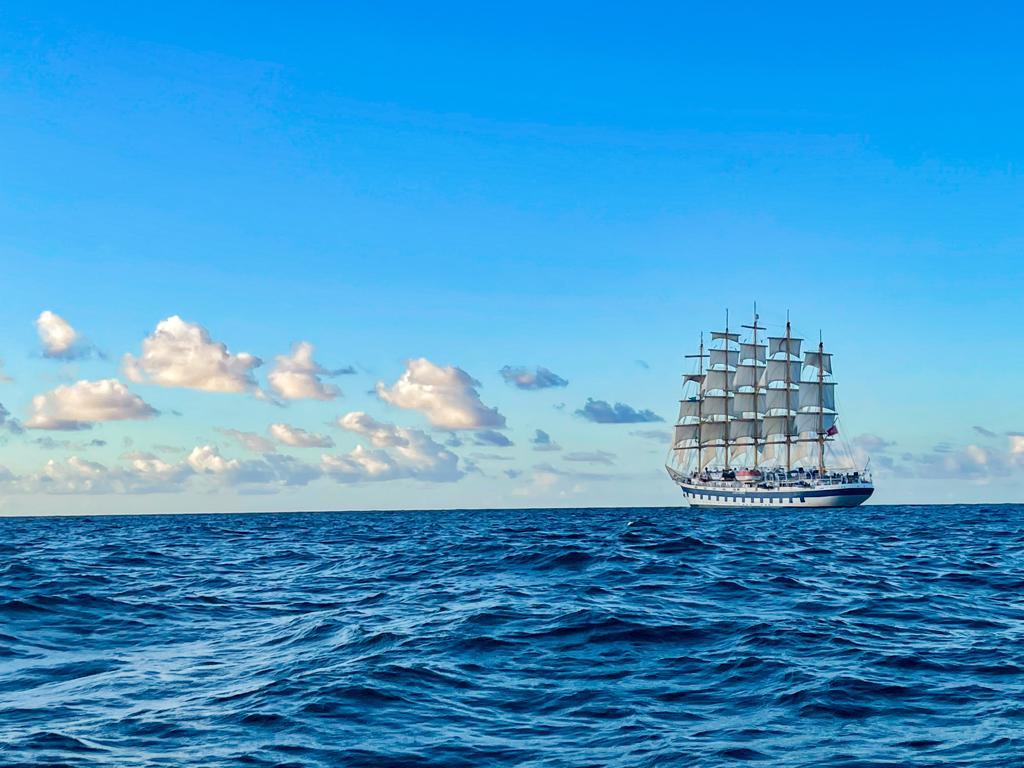
We had a small New Years pot-luck dinner with Mark from Pom, Susan (his
crew up to Antigua) and Dean from Moxie, but were safely in bed by
midnight.
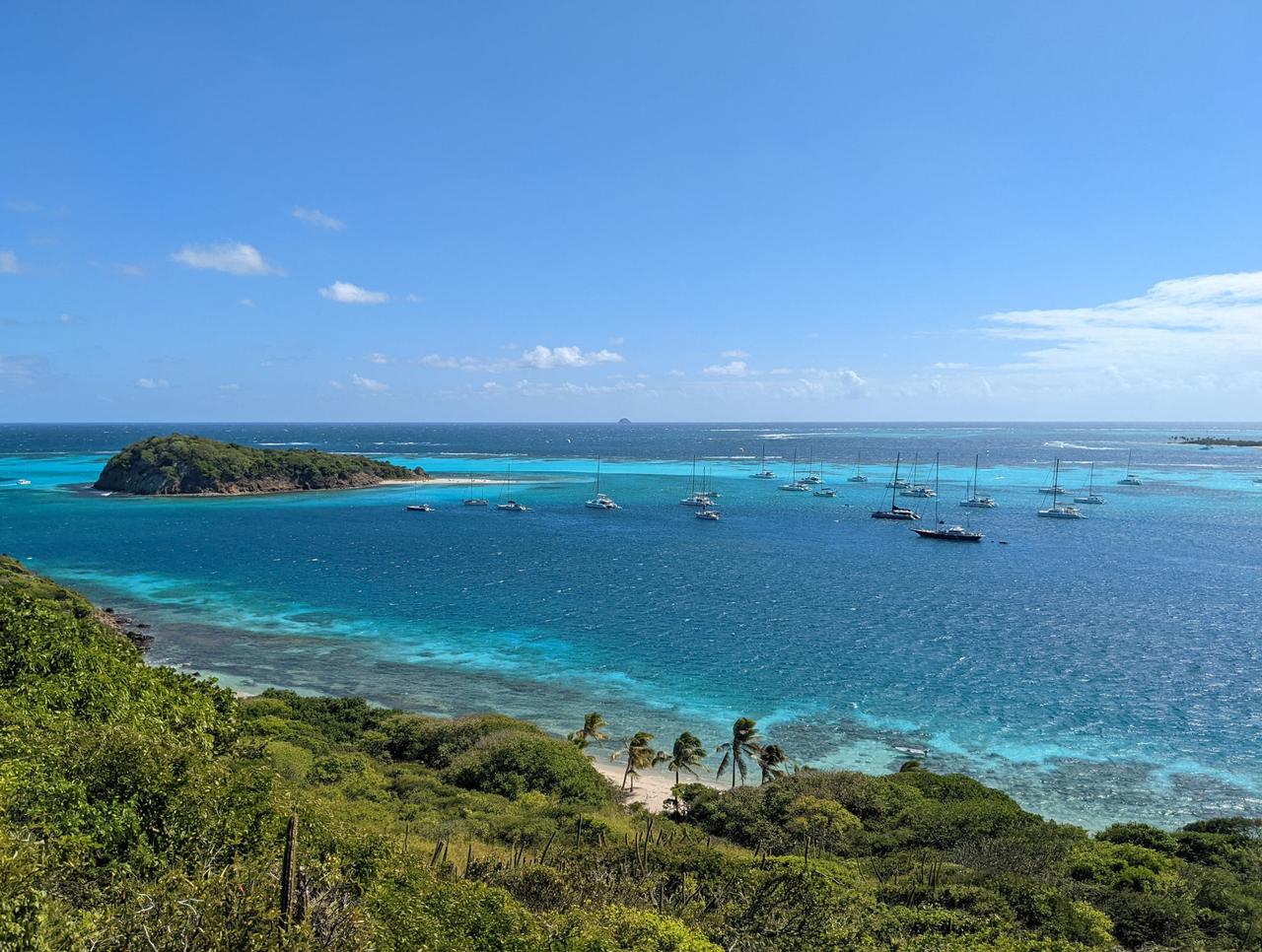
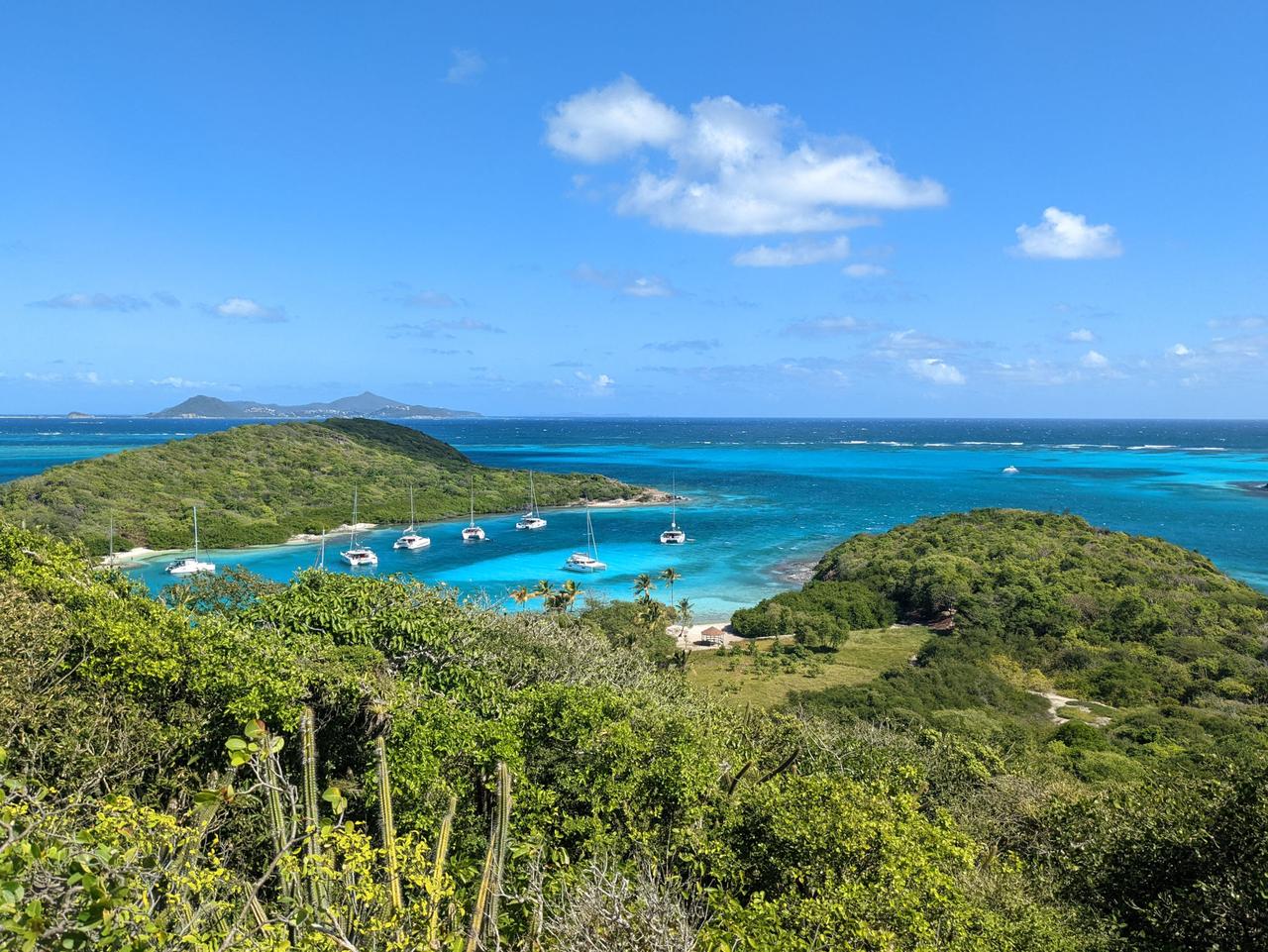

Snorkelled in a few areas around the cays. The dinghy channel is
interesting, because it has a strong current through it, so you can do a
drift dive (if you don't guess the wrong direction for the current).
Our favourite was on the South arm of the horse-shoe reef, where the
current was relatively mild. Saw a few reef sharks there, some massive
lobsters, as well as eels, triggerfish and the usual reef fish.
The really special feature of the cays are all the turtles. They are
everywhere in the anchorage and aren't too skittish, so you can swim
quite close to them while they munch on sea grass.
We got some minor jobs done while at anchor. Connor went up the mast,
a couple of times, and replaced our wind sensor. So we now have a
working anemometer.
Some of our instruments got a bit sun-burned while we were on the hard
in Grenada, so we swapped the worst one with a spare at our Nav Station.
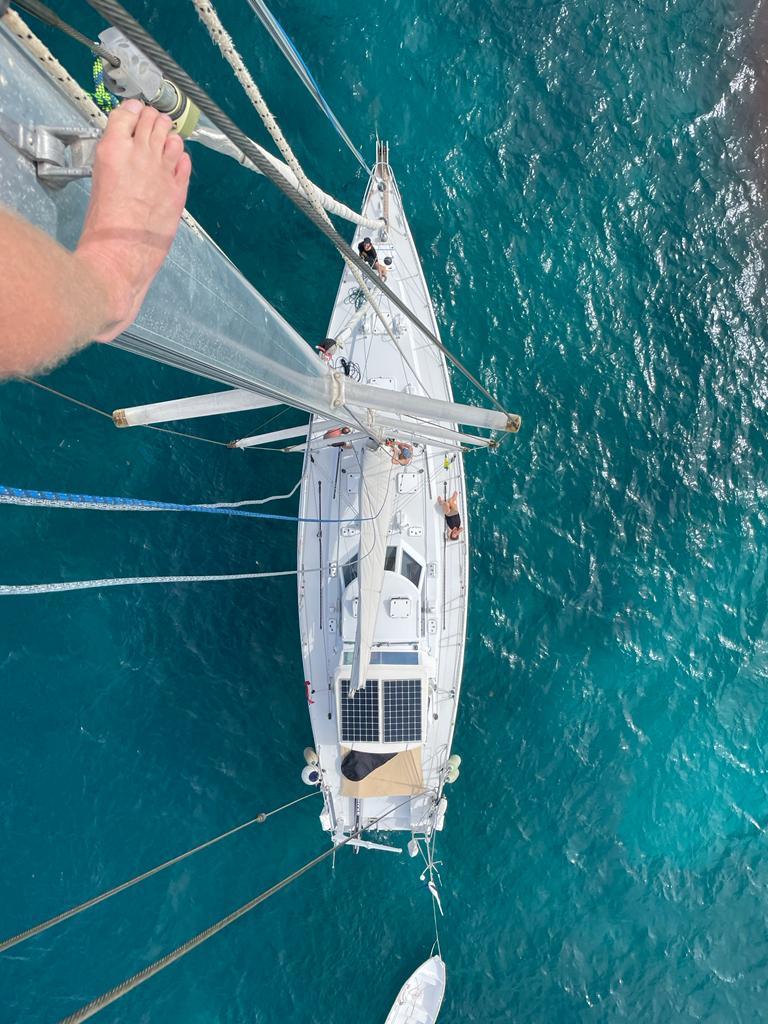
And while we were inside the Nav Station wiring, we hooked up our AIS
receiver to the boat's Raspberry Pi.
This is running SignalK, and provides the AIS
feed to Navionics on our phones and iPad, so we can see nearby traffic.
It also forwards the AIS messages on to Marine Traffic and AIS
Hub.
We found ourselves getting a little behind in water-making, our tanks
were emptying and we weren't keeping up. After a couple of days of being
confused, we realised that the water-maker output wasn't getting into
the tanks. It showed that it was producing 40l/hr (lower than it should,
but still significant), but the tank level just wasn't rising much.
The issue was a broken valve handle that wasn't moving the valve, we
don't know how the water got overboard, but it must have, somehow.
Once we'd replaced that valve handle, we were getting some water
into the tank, but the water-maker was slowly decreasing its pressure
and output, causing some anxiety.
You get used to being able to rinse-off after every swim, and regularly
wash the boat...
One of the feed pumps seemed to be doing a lot less work than the other,
so we replaced it, but that didn't really improve things.
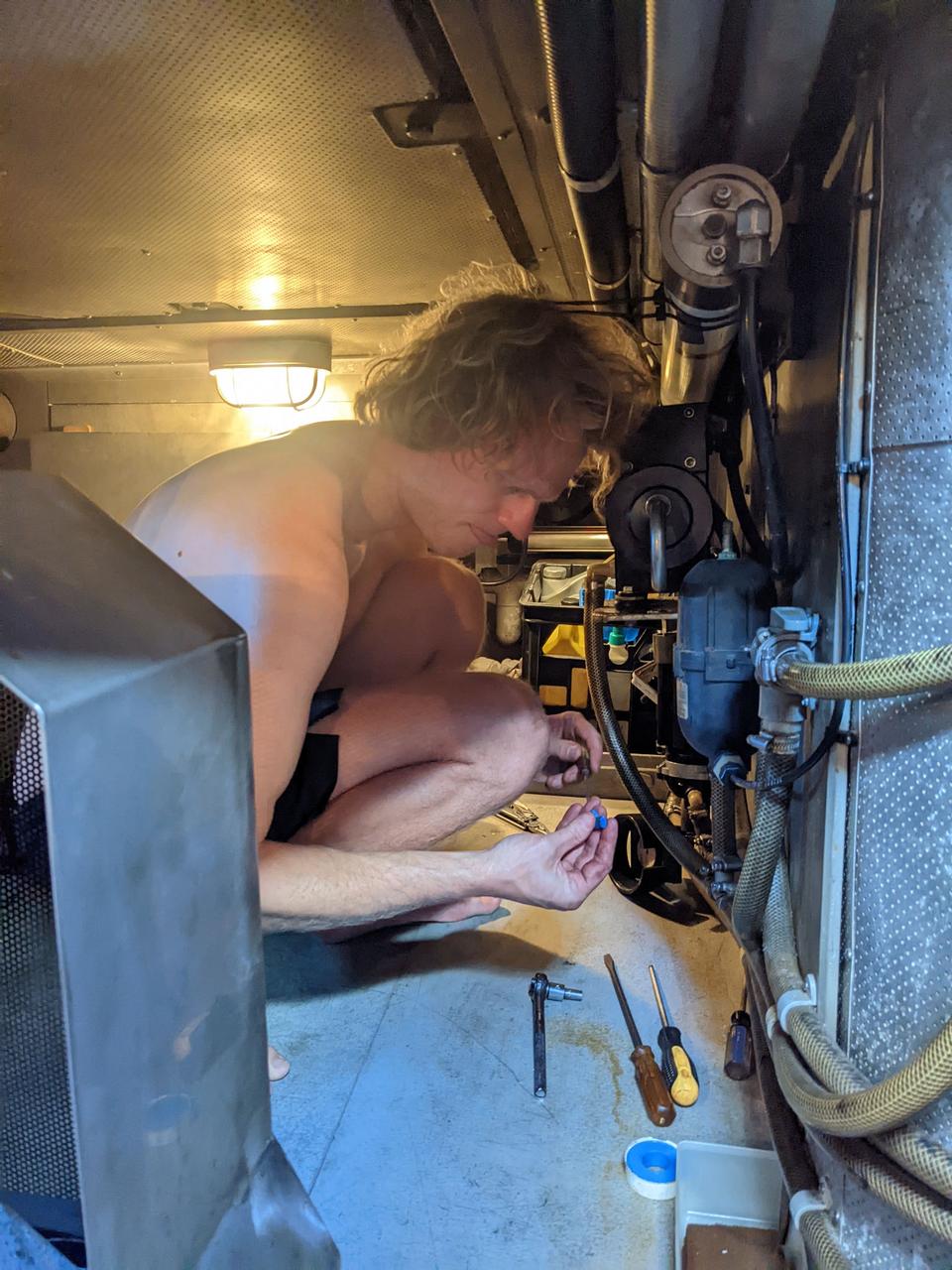
On the bright side, we climbed a few of the islands around the cays,
seeing several iguana and other brightly coloured lizards.
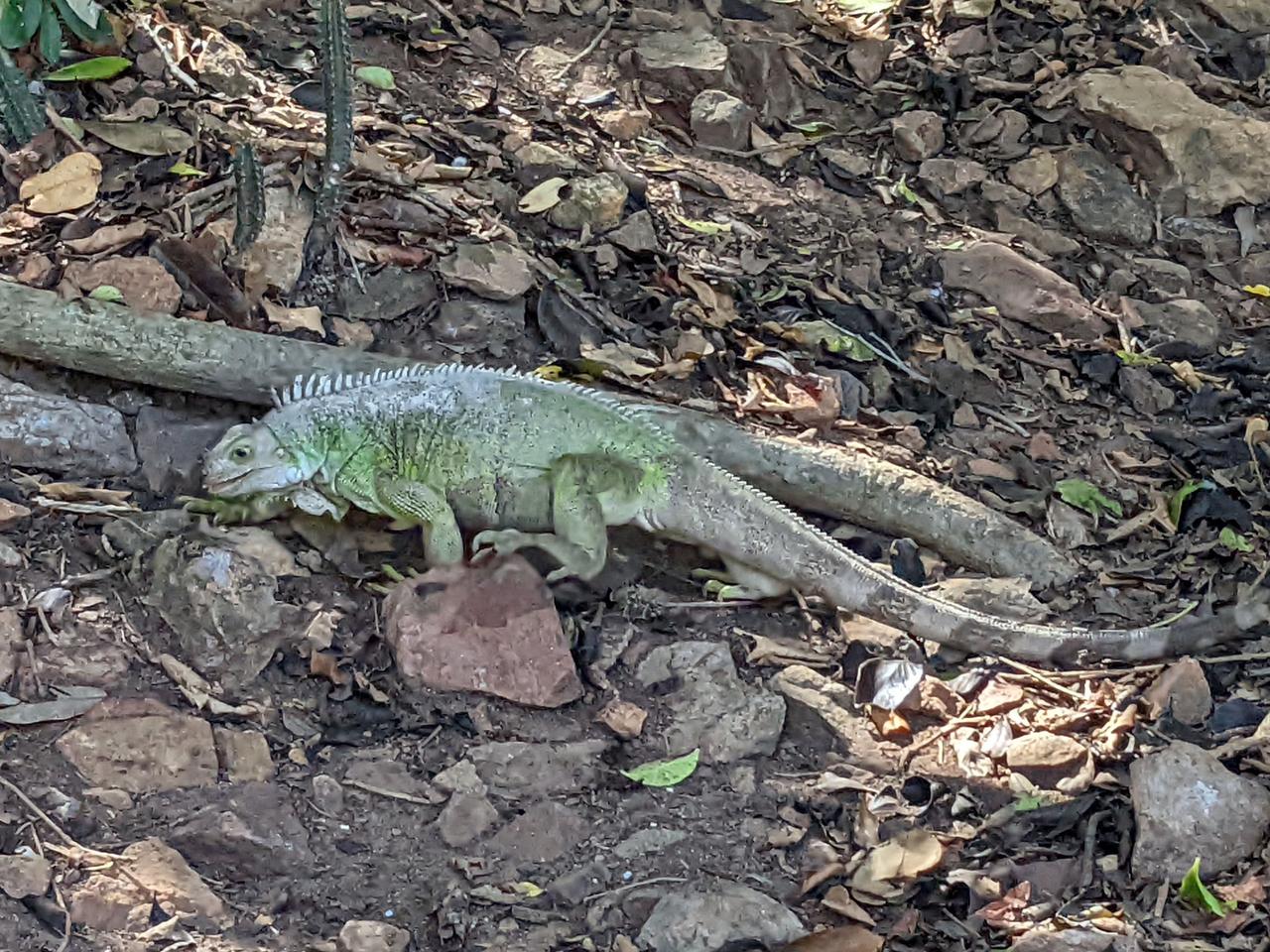

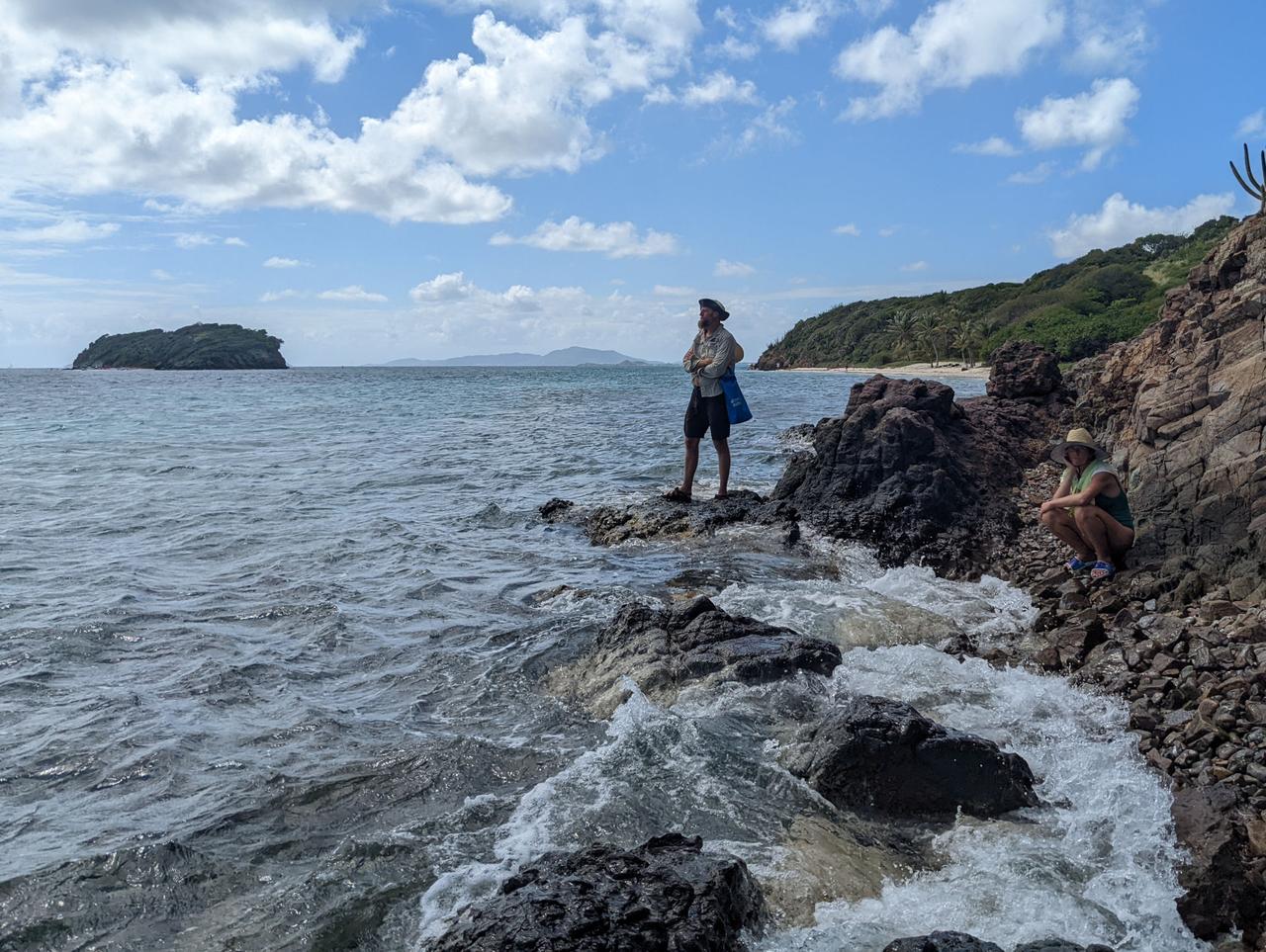
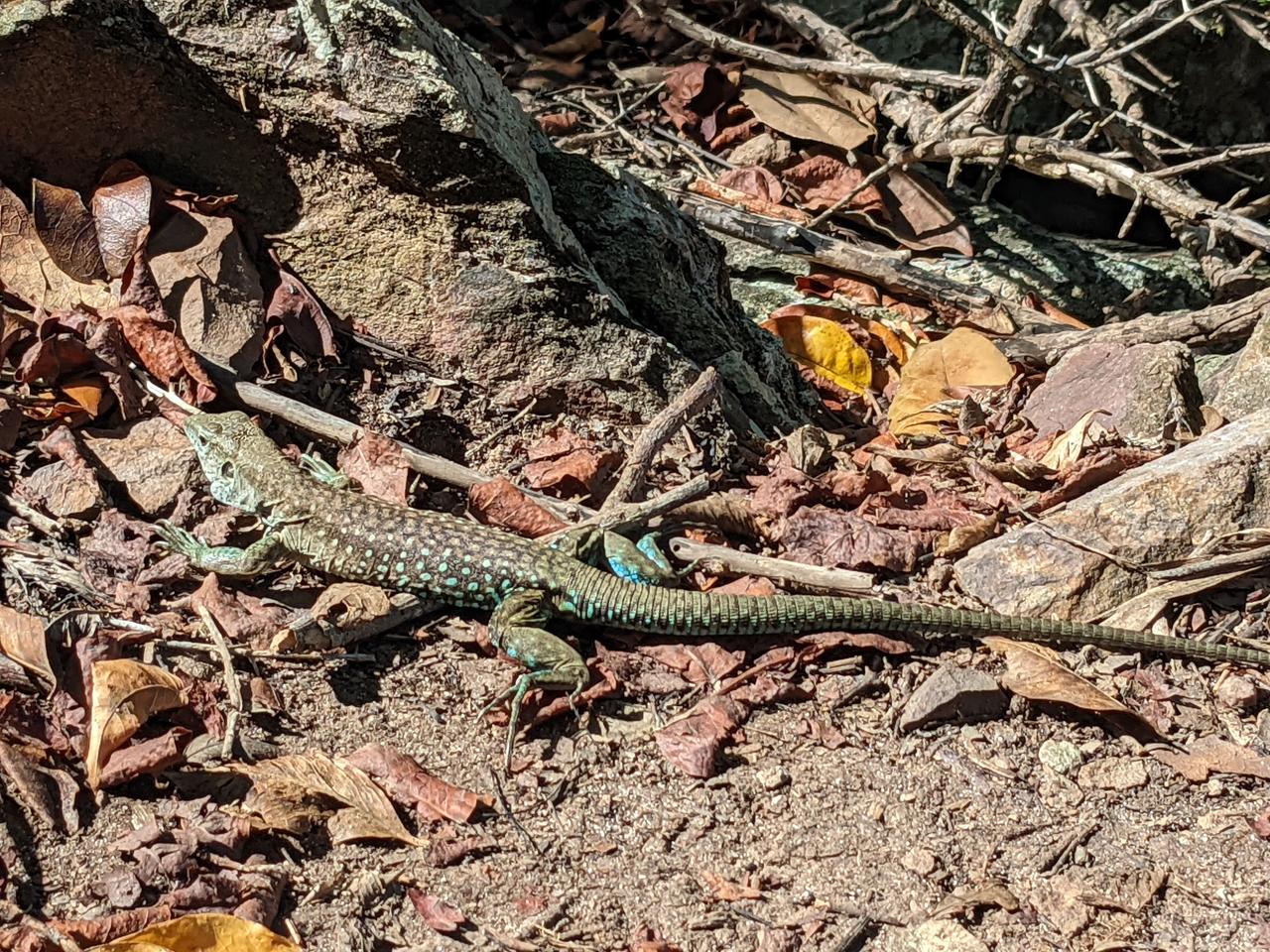
We headed up to Bequia from the Cays, an easy sail up past Canuan
towards Petit Nevis, where we planned to stop for lunch.
We were pinching fairly tight into the wind, but made it up on one tack.
A massive Oyster 825, Maegan, overtook
us on the sail up (probably taking a few more degrees off the wind, for
speed), and was anchored off Petit Nevis when we arrived.
This is the old whaling station south of Bequia.
Bequia is one of the few communities that still hunts whales (they have
no other natural resources), and until relatively recently Petit Nevis
was where the whales were brought ashore for processing.
The whales are apparently hunted traditionally, with hand-thrown
harpoons, from wooden row-boats.
It wasn't a great anchorage, we found the only patch of sand available
(with 4 other anchored yachts), had lunch, and swam into shore to see
the whaling station ruins, and snorkel a little. Then motored around the
point into Admiralty Bay, Bequia.
Past the spectacular Moonhole ruins.
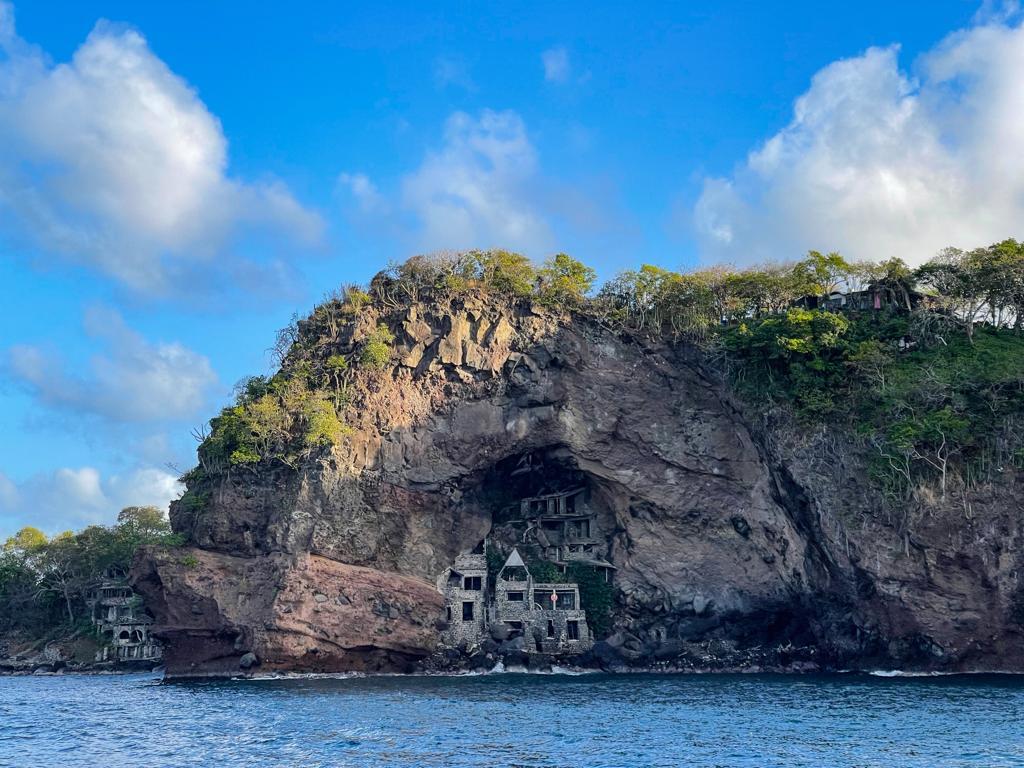
Time on the water: 5:28
Distance covered: 30nm
Avg speed: 5.5kts
Max speed: 11.3kts
Crew: John, Stefano, Clare, Connor, Robin
Navionics Track

